ON THE EDGE
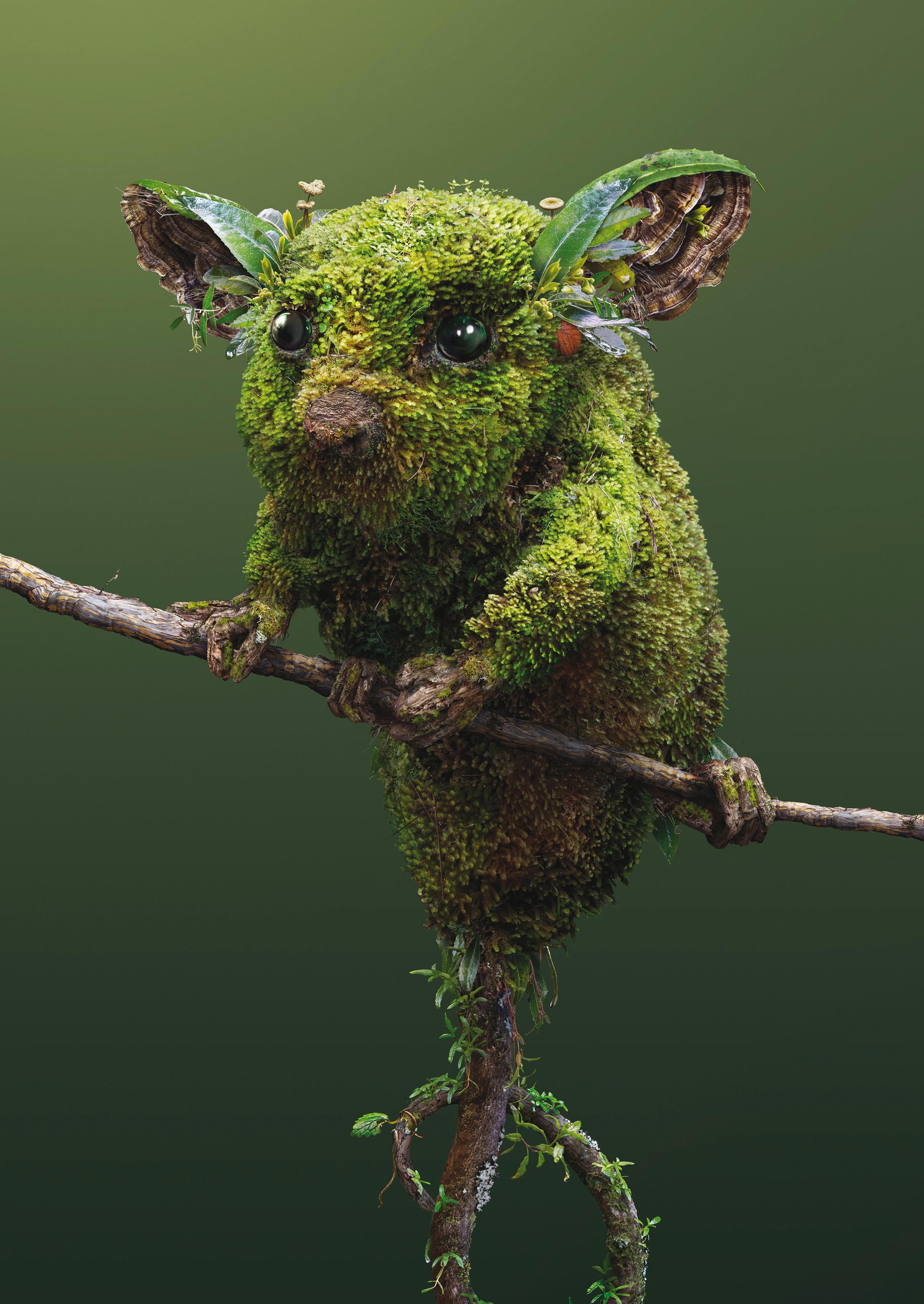
NEW BOOK CLUB • WHAT’S ON • MAD VICTORIANS • GUIDING LIGHTS AUTUMN 2023 Issue 136 $9.95
A LIGHT ON SPECIES AT RISK
SHINING
Dawn Redwood / Shui-Shan Metasequoia glyptostroboides
Early in the 20th century this species was known only to local people in central China, near the borders of Hubei and Sichuan provinces, who referred to it as shui-shan (water fir).
In 1941, prior to its recognition as a currently living plant, Metasequoia glyptostroboides was identified by a Japanese paleobotanist studying the fossil record and named as one of several similar species that grew across the northern hemisphere in the late Cretaceous period.
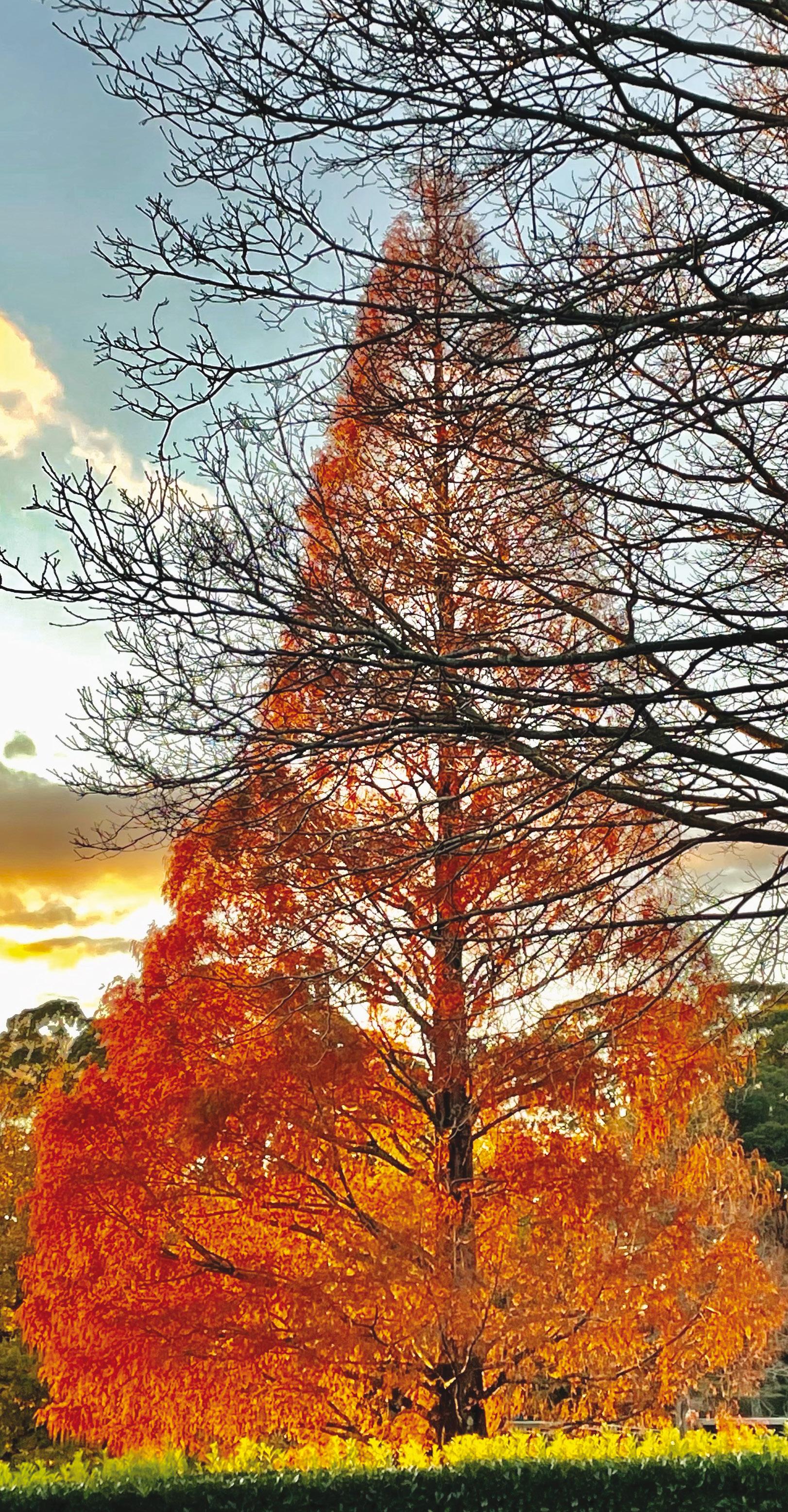
By coincidence, that same year, a professor from Nanjing, T. Kan, came across a living specimen in a village in the countryside. As it was winter, the tree had dropped all its leaves, so in 1946 a recent graduate, Hsueh Chi-ju, was tasked with collecting more material for examination. It was no straightforward assignment – Hsueh took a riverboat down the Yangtse for two days from Chongqing, then travelled alone along narrow mountain paths for 120km, despite robbery and murder being relatively common in the area. Upon arrival he found a further 22 individual Dawn Redwood. In 1948, seeds were sent to the Arnold Arboretum in the United States, where they were germinated and then shared around the world.
Dawn Redwood is deservedly popular – its delicate green foliage turns a reddish-brown in autumn and catches the light beautifully. It is tolerant of a range of climates and soils, but benefits from having the space to develop a complete canopy. The tallest trees in the wild reach 50m high, but 30m tall trees are not uncommon in cultivation. The Blue Mountains Botanic Garden’s specimen (pictured right) is around 24m tall, so it still has plenty of growing to do.
Antony Rivers, Senior Arborist Blue Mountains Botanic Garden
THE GARDENS AUTUMN 2023 2
Photos: Mat Murray
CONTENTS
FEATURES
14 On the Edge Foundation & Friends’ newest exhibition focuses on Australia’s diminishing biodiversity
20 Battle beneath Table Mountain Helping Cape Town’s Kirstenbosch National Botanic Garden contain damaging pathogens

23 John Siemen reports from the 7th Global Botanic Gardens Congress
GARDENS NEWS
4 Anniversary celebrations
Join our 40th anniversary events
6 Join the club Book lovers rejoice
8 Life Members: Celebrating the contributions of Janet Snodgrass and Flora Deverell
IN EACH ISSUE
7 Books Reviews and the chance to win
10 Artefact The plant that made Victorian’s go wild

12 First Person Meet Phil Pettitt, Community Greening Manager

26 Travel Exiting new Friends’ tours
27 Plants Some tips on what to look out for this autumn
30 What’s on Your guide to activities and events
On the cover
Josh Dykgraaf’s startling artworks typically contain thousands of Photoshop layers. His work
Pygmy Possum, created from alpine mosses and fungi, will feature in the inaugural On the Edge exhibition. See details page 14.
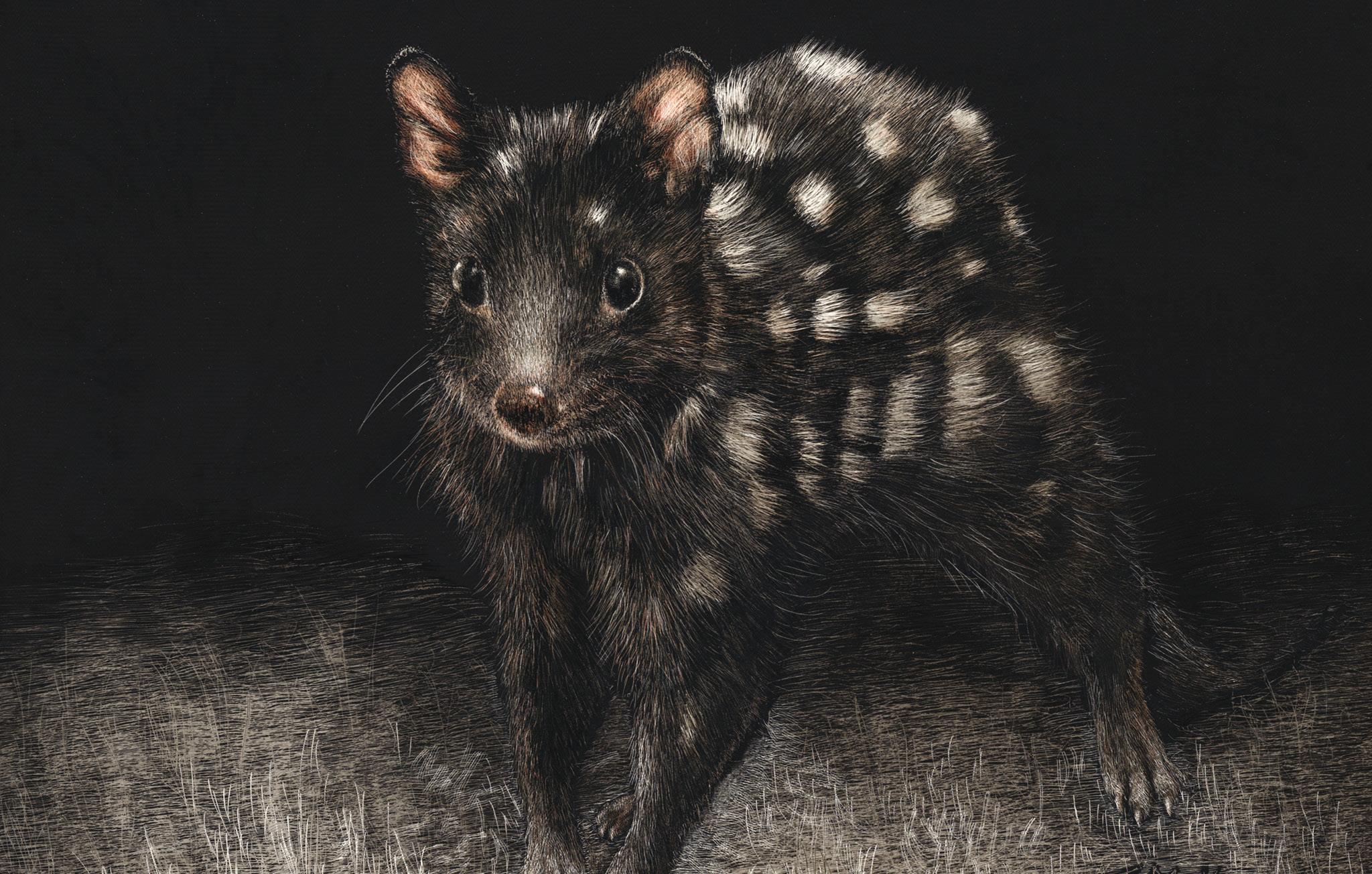
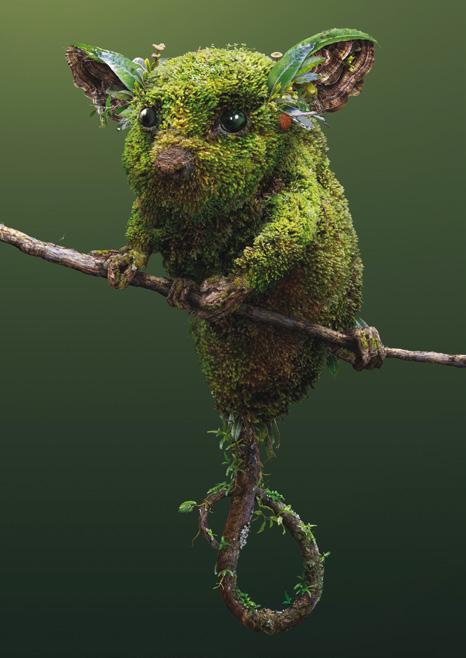
3 THE GARDENS AUTUMN 2023
14 10 12 20
AUTUMN UPDATE
PLANT SALES TO OPEN ON SUNDAYS
Growing Friends Plant Sales has announced plans to extend its opening hours at the Royal Botanic Garden Sydney to include Sundays from 30 April 2023.
General coordinator Raoul de Ferranti says that after battling poor growing conditions through much of last year, plant production is now recovering strongly, and the Growing Friends team is “rejoicing in a wonderful offering of plants at our Plant Sales in Sydney and at the Australian Botanic Garden Mount Annan”.
The extension of opening hours to include Sundays continues a period of progressive growth of the Sydney Plant Sales operation, which commenced back in 2006 by opening on just one Saturday per month. It now opens 11am–2pm Monday to Friday, and 10am–2pm on Saturdays.
“Extending weekend openings to include Sundays will make our diverse range of unusual plants even more accessible for busy working people.”
Foundation & Friends is this year marking its 40th anniversary and members are invited to celebrate the milestone at specials events taking place across our three Gardens between March and May.

CEO Pete Thomas says the events will acknowledge the four decades of support Foundation & Friends has provided to ensuring the Gardens retains its place among “the world’s greatest scientific, educational, horticultural, cultural and recreational spaces.
“Most importantly it’s a chance to catch up with old friends, and to perhaps
forge a few new friendships with people who share our vision and passion.”
Dates for the events – which include a festive morning tea and a ceremonial tree planting – are as follows:
• Blue Mountains Botanic Garden
Tue 7 March, 10.30am–12.30pm
• Royal Botanic Garden
Thu 27 April, 2pm-4pm
• Australian Botanic Garden
Wed 10 May, 10.30am –12.30pm.
If you’d like to attend, please RSVP by emailing Foundation & Friends at foundation.friends@botanicgardens. nsw.gov.au.
Meanwhile, de Ferranti says Growing Friends has also initiated a program to recruit and train new Growing Friends volunteers, specifically to assist and in due course direct the Sunday Plant Sales openings.
“Anyone interested in helping with our Sunday sales should contact the Foundation & Friends office for more information.
“Members can also keep in touch with news of the changing supply of plants at our nurseries through the Foundation & Friends email newsletter, Facebook and Instagram posts.”
See page 29 for details on the opening hours of all three Growing Friends Plant Sales operations.
4 THE GARDENS AUTUMN 2023
NEWS
Photos: Jessica Lindsay, © Royal Botanic Gardens and Domain Trust
Sir Rupert Myers, Alan Searle and Kate Fitzpatrick at Friends’ inaugural planting in 1982
HELP CELEBRATE OUR 40TH ANNIVERSARY
WEEDING OUT THREATS ON NORFOLK ISLAND
Five scientists from the Australian Institute of Botanical Science (AIBS) recently worked with the Norfolk Island community to identify new weeds posing a threat to local ecosystems, while at the same time broadening our knowledge of the destination’s diverse flora, especially the Bryophytes (mosses, liverworts, etc.)
Funding from Foundation & Friends ensured participation in the expedition by the scientists, who focused their efforts on areas where no (or few) plant collections have been lodged in Australasian herbaria.
The Institute’s Science, Education & Conservation Operations Manager, Dr Marco Duretto, says locals also supplied specimens of Oxalis pes-caprae (Soursop), Soliva anthemifolia (Button Burweed), Hypochaeris albiflora (White Flatweed) and a species of fern in the genus Blechnum – all new weed records for Norfolk Island.

In total the Australian Museumled expedition collected around 400 herbarium specimens of approximately 140 species – a number Duretto says is likely to increase following further research, with the team anticipating the discovery of several new records of species. In addition, scientists collected tissue samples for DNA extraction and analysis.
Duretto says one of the most positive outcomes of the project was the strong bonds formed with the Norfolk Island community, which supported the scientists with local knowledge, equipment and access to land.
"We are keen to continue our relationship with the community, and so we've left plant presses with some people, and offered our services for plant information and identification.”
Meanwhile, he says AIBS is hoping to take part in future projects with the Australian Museum, while also launching its own expeditions.
CEO'S REPORT
Over the past few months it has been wonderful to see the growing number of visitors bringing so much life back to the Gardens. Our Foundation & Friends events have been very busy, with members and their friends enjoying both new and established activities across the three Gardens.
A highlight of our schedule was our New Year’s Eve Picnic, a spectacular sold-out event that attracted a large number of families and guests from around the world. This year we added entertainers for the children and a range of merchandise, which proved popular. This important fundraiser for Foundation & Friends smashed targets, so a huge thanks to the staff and volunteers who made it possible – and to our amazing members for attending and bringing so many of your friends. Our goal is to have the best picnic on the harbour!
One thing the recent events have highlighted is that there is still work to do to make the Gardens accessible to all. Our Botanic Gardens are a wonderful and well-loved place that attracts an incredibly diverse community, but not all can easily enjoy everything the Gardens has to offer. One minor change we are making with the Gardens is to put small access ramps on the edges of the lawns used for the New
Year’s Eve Picnic, so those with limited mobility can enjoy the entire picnic space. Foundation & Friends is also supporting the Royal Botanic Gardens and Domain Trust to try and secure funding to improve accessibility around the Calyx at the Sydney Gardens.
As well as engaging members and raising funds, Foundation & Friends plays an important role advocating on key issues, such as accessibility and environmental sustainability at the Gardens. Late last year the Board endorsed the new longer-term strategy for Foundation & Friends. This maps out an exciting roadmap for the organisation. At the heart of the strategy is building a thriving and connected community to support the growth, sustainability and impact of the Gardens. A vital building block for us to be effective is for Foundation & Friend members to have a voice and be engaged in the future of your Gardens.
I would like to take this opportunity to thank those members, donors and volunteers who gave their voice and time to the development of the new strategy. We will be rolling the strategy out over the coming months, and working hard to see your Gardens grow and have greater impact.
Peter Thomas
5 THE GARDENS AUTUMN 2023 NEWS
FRIENDS’ TOURS TAKE FLIGHT
With travel restrictions now a fading memory, Foundation & Friends is quickly expanding the horizons of its popular program of tours to some of the world’s most inspiring gardens, landscapes and horticulture. Members can already book memorable excursions exploring the Blue Mountains, the Larapinta Trail, New Caledonia and Japan (see page 29). But there are plenty more adventures on the drawing board, including journeys to:
• Singapore (August 2024) – where urban greening is running wild, producing incredible cityscapes across and on the island state’s buildings, including the world’s tallest vegetable garden (51 storeys up) and the planet’s biggest living wall

• Far North Queensland (August 2024) – a one-of-a-kind botanical and cultural destination encompassing unique gardens, geology, biodiversity and Indigenous learnings
• Namibia and South Africa (September 2024) – home to fantastic megafauna, starkly beautiful desert landscapes, giant sand dunes, arid-adapted flora, mass flowerings of intensely coloured Namaqualand daisies, and the mind-boggling botanical diversity of the Cape Floristic region
• Northern Japan (August 2024) – where the wilder and less-populated prefectures of Aomori and Hokkaido
offer a host of off-the-beaten track delights, including the visionary Dan Pearson-designed Tokachi Millenium Forest, along with lively festivals, delicious food and beautiful weather • Bhutan (April 2025) – renowned for its breathtaking Himalayan scenery, spiritual culture, colourful history and the exhilarating Rhododendron Festival, an annual three-day celebration of ecology, food and entertainment that marks the arrival of spring. As always the tours will be led by Foundation & Friends’ guides, all of whom are committed scientists and horticulturists with a passion for sharing their knowledge and enthusiasm. Among them are former Senior Principal Research Scientist with the National Herbarium of New South Wales, Dr Peter Weston (Namibia and South Africa), Gardens’ manager volunteer programs, Paul Nicholson (Far North Queensland) and former member of the Royal Botanic Garden Sydney's education team Relle Mott (Northern Japan).
If you are interested in finding out more about any of Foundation & Friends’ new tours, please email foundation. friends@rbgsyd.nsw.gov.au. And if you would like to meet some of our guides and learn more about upcoming itineraries, join us at the Maiden Theatre on 21 February (10am–12noon) for an “armchair ride” through a Foundation & Friends journey.
NEW CLUB FOR BOOK-LOVING FRIENDS
Foundation & Friends members love to read – as shown by the enthusiastic response to the giveaways offered on The Gardens’ dedicated books page – and that is why this year we are launching a book club.

Communications and Marketing Manager Meredith Kirton, herself the author of multiple horticulture books – says the club will focus on all types of publications showcasing the natural world.
“That includes creative nonfiction, nature writing and fiction,” says Kirton. “We are also hoping to offer regular author talks, share reading lists and even establish a small library for our members use.
“The first book on our calendar will be Evergreen: The Botanical Life of a Plant Punk, by the Botanic Gardens’ former Executive Director Tim Entwisle, copies of which we gave away in our last issue.
“Other authors on my list to try and entice, or at least read their books, are Inga Simpson (Willowman) and Holly Ringland (The Lost Flowers of Alice Hart), but I can’t wait to hear members' suggestions too.”
Kirton says the first step to establishing the new club – which ideally will meet once a month and incorporate a food theme related to the book in question – will be to set up a committee of volunteers.
“If you are interested in contributing please get in touch by emailing foundation.friends@ botanicgardens.nsw.gov.au.”
6 THE GARDENS AUTUMN 2023
NEWS
Photos: Meredith Kirton, Joyce McCown, © Royal Botanic Gardens and Domain Trust
Singapore's Parkroyal Collection Pickering hotel is adorned with high-rise trees and greenery
YATES TOP 50 FRAGRANT PLANTS (AND HOW NOT TO KILL THEM!)

Angie Thomas
Harper Collins
RRP $35.00
Angie Thomas provides a practical guide to growing sensory-stimulating plants, with advice on everything from climate and soil to garden environment and maintenance levels. She also identifies plants more suited to less experienced gardeners and discusses how fragrance is linked to time and seasons, before taking a closer look at her "top 50" (with beautiful photographs of each). Plants are well organised into six categories: annuals, biennials /perennials, bulbs, climbers, trees/ shrubs and plants with fragrant foliage. The guide also provides plenty of helpful tips on plant care, including strategies for managing some common pests and diseases, and advice on potting, feeding and watering. Thomas has worked in the horticultural industry for more than 25 years. As well as being a writer and broadcaster, she is Horticultural Communications Manager for Yates, which has now been producing gardening guides for around 125 years.

YOUR CHANCE TO WIN A BOOK
WILDLIFE IN THE BALANCE WHY ANIMALS ARE HUMANITY’S BEST HOPE

Simon Mustoe Wildiaries Publishing
RRP $34.99
Over the past 50 years around three quarters of the creatures needed to keep ecosystems healthy have disappeared and, in Wildlife in the Balance, Simon Mustoe explains why arresting this trend is vital to humanity’s survival. Mustoe explores the role that wildlife plays in maintaining planetary ecosystem stability, and why time is running out for humanity to “re-find its place in nature”. He also provides guidance on how readers can implement small but powerful changes in their lives and presents a 10-point plan to spark a global shift in human values, which includes developing new criteria for species conservation based on animals’ contribution to biodiversity. Mustoe is an ecologist, expeditioner and conservationist who has consulted to industry, government and conservation groups around the world. He has also co-produced the National Landscapes Nature Series and publishes an online magazine, Wildiaries, to around a quarter of a million Australians.
GARDEN GATHERED: FLORAL DESIGN & RURAL LIFE AT RIVERDALE FARM
Helen Leighton
The Flower Press

RRP $89.95
When COVID forced busy floral and garden designer Helen Leighton to stop and smell the roses, she decided to start writing a journal to observe the simple moments of everyday life on her flower farm. The result, Garden Gathered, captures a year on the spectacular Riverdale Farm, which for the past 18 years Leighton and her husband Jim have developed near Albany on Western Australia's south coast. Leighton, who has been growing flowers for more than 30 years, details her approach to floral design and styling, with plenty of tips (for everyone from the curious to the seasoned gardener and florist) on growing, drying and sustainably. She also shares some insights into "living seasonally" and relates her experiences tending her orchard and pinot vineyard, as well as beekeeping, sewing and blacksmithing.
Foundation & Friends has a few copies to give away of the books featured above. To be in the running to win, just email foundation.friends@botanicgardens.nsw.gov.au or write to Letters, Foundation & Friends, Cottage 6, Mrs Macquaries Rd, Sydney NSW 2000 by Friday 10 March. Be sure to include your contact details, current membership number and which book you would like to receive. In our last edition we gave members the chance to win
Discovering Australian Flora (Fanny Karouta-Manasse), The Compact Australian Bird Guide (Jeff Davies, Peter Menkhorst, Danny Rogers, Rohan Clarke, Peter Marsack and Kim Franklin) and Platypus Matters (Jack Ashby). Congratulations to our winners: David Cholson, Susan and Andrew Furman, Diane McQueen, Pamela Melocco, Jenny Pattison, Siak Khoon Png, Michael Roberts, Jane Rodgers and Ursula Zuffo.

7 THE GARDENS AUTUMN 2023 BOOKS
Garden Gathered Floral design & rural life at Riverdale Farm
Helen Leighton
LIFETIME HONOURS FOR TWO GUIDING LIGHTS
FOR FOUNDATION & FRIENDS’ TWO NEWEST LIFE MEMBERS, ALL IT TOOK WAS A FEW INSPIRING WORDS TO SPARK DECADES OF DEDICATION. DAVID CARROLL REPORTS.
Back in 1978 Flora Deverall attended a talk by the Royal Botanic Garden’s then Assistant Director of living collections Don Blaxell. Exciting times lay ahead – he told the audience of woman science graduates – because responsibility for the Gardens had just moved to the office of New South Wales Premier Neville Wran, and that meant funding was sure to flow.
“Prior to that the State government never knew where to put the Gardens,” recalls Deverall. “But Wran took a
personal interest and so money was finally spent, which led in 1980 to the creation of the Royal Botanic Gardens and Domain Trust, and ultimately in 1983 to the creation of Friends of the Royal Botanic Garden.”
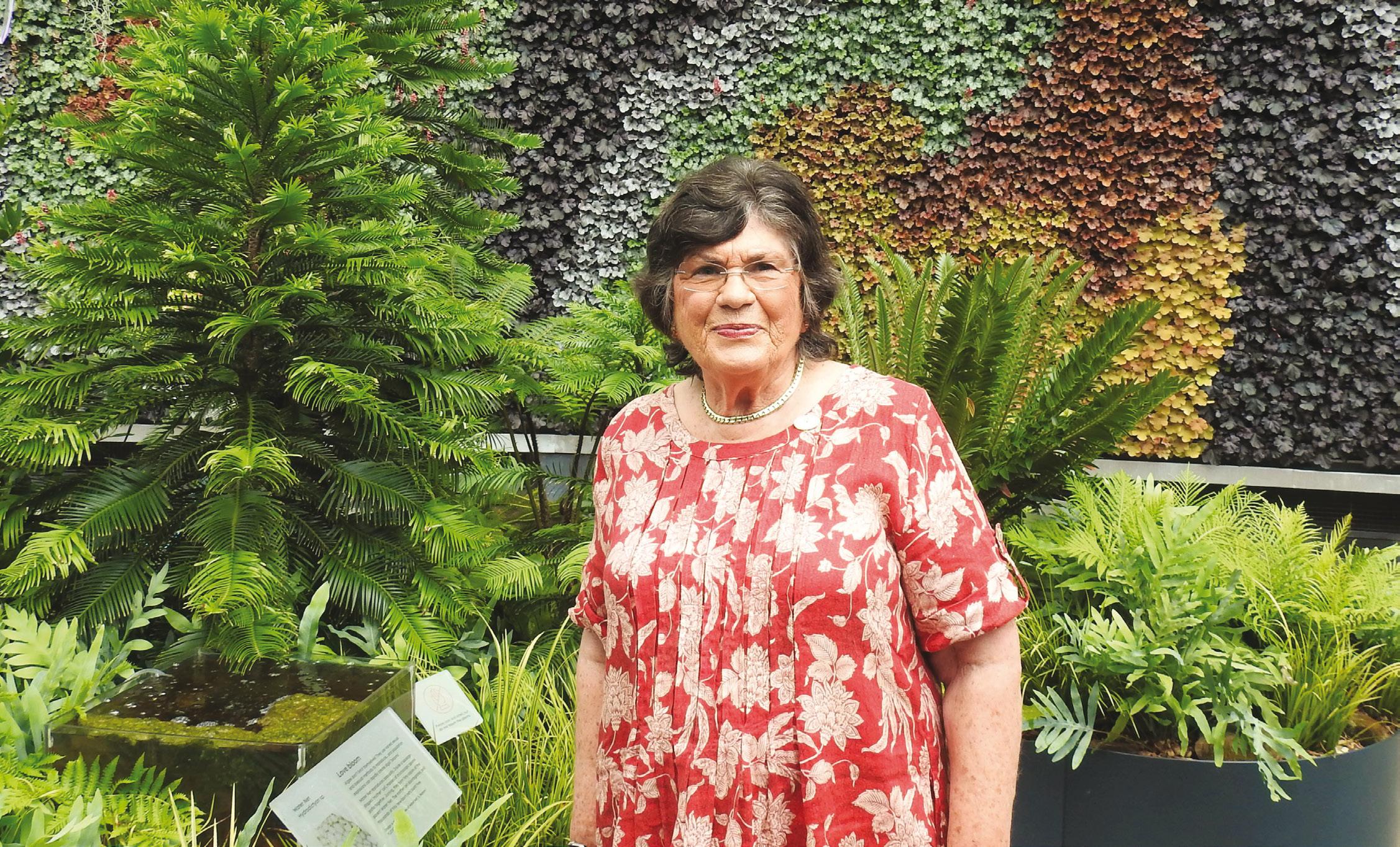
Blaxell was addressing the group in part because he was eager to recruit volunteer guides to show visitors around the Garden. Deverall was more than qualified, having not long returned to Australia after 15 years abroad, during which she had contributed to research
into mycology at Imperial College London and at Forest Products Laboratory in Wisconsin in the US mid-west.
“I was working, however, as a part-time tutor demonstrator at Sydney University’s School of Biological Sciences and also the faculty of Agriculture, and was married with three children, so I had enough on my plate,” she says.
“Then a few years later the Federal government started cutting back funding for universities, impacting part-timers like me. Blaxell’s words stuck with me,
8 THE GARDENS AUTUMN 2023
AWARDS
Photos: Meredith Kirton, Joe Bidwell, © Royal Botanic Gardens and Domain Trust
Flora Deverall
so I thought I’d see what was happening. That’s how, in 1981, I became the Garden’s sixth volunteer guide”.
When Friends was formed a couple of years later, Deverall joined up and within a matter of months found herself on the committee. In 1985, she helped organise Friends’ first overseas tour (The Mogul Gardens of India) and by 1986 was starting a three-year term as the organisation’s President.
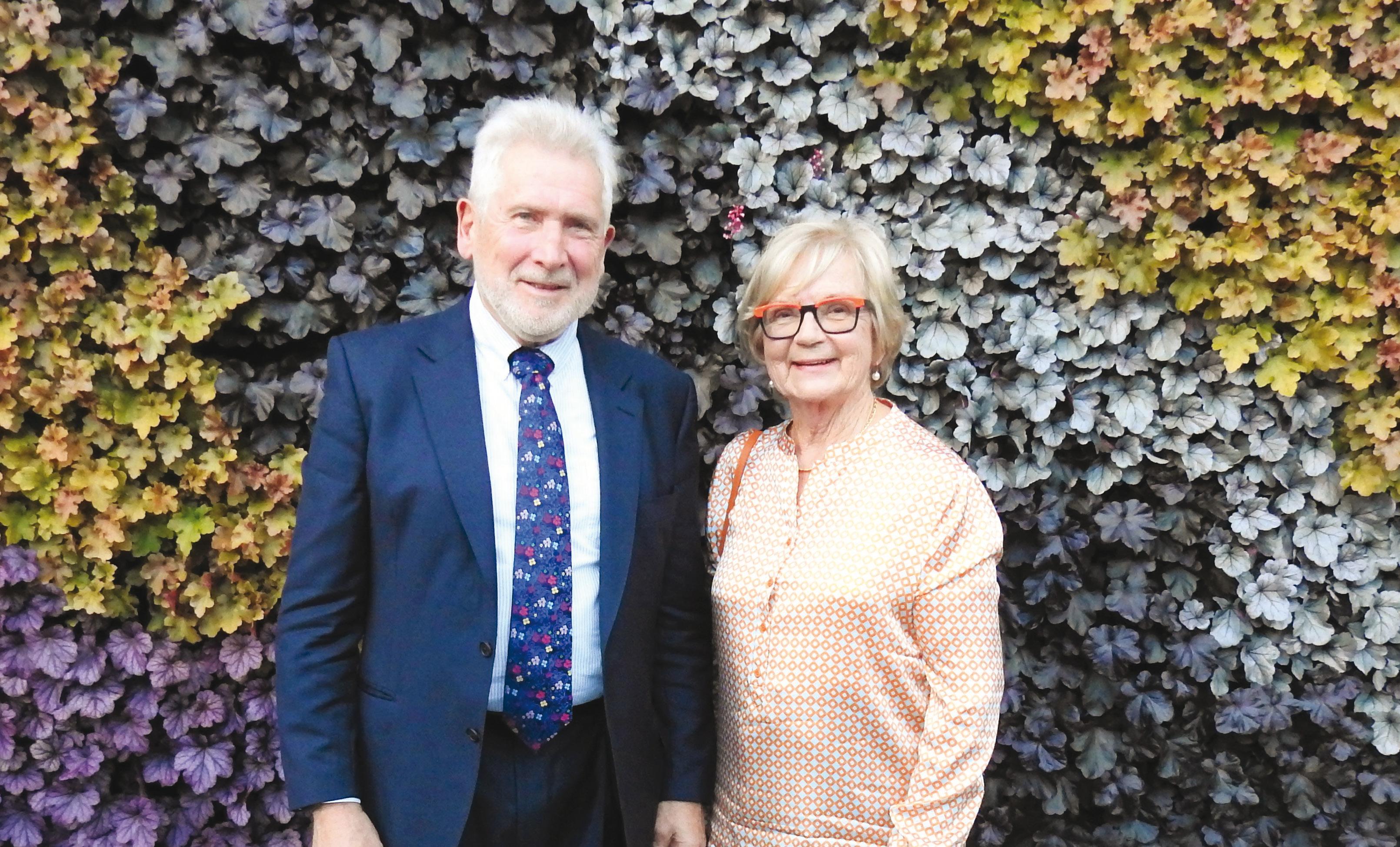
During her 40 years with the Gardens Deverall has never stopped helping develop the guide program, training countless volunteers and developing special guided walks – efforts that in 2017 were recognised when she was honoured at the NSW Volunteer of the Year Awards. And just last month, not long after being made a Foundation & Friends Life Member, she received an OAM for Service to the Community.
A RARE FIND
It was another stimulating botanical presentation that hooked Foundation & Friends Life Member recipient Janet Snodgrass.
“In 1995 I went with my husband to the Mosman Town Hall to hear David Noble describe how a year earlier he had discovered the Wollemi Pine,” she recalls. “I was so impressed that I joined Friends, and within a few months, at the behest of then Vice President, Margot Child, I became a volunteer.”
Snodgrass, a pharmacist by trade, brought to the organisation plenty of hands-on experience as a volunteer, having driven successful fund-raising efforts for local sporting groups and schools. And Child, a friend of her older sister, knew she had found a gem.
Over the next 20-odd years she served as Friends’ first official Volunteer Coordinator, sat on the committee, helped establish the New Year’s Eve Picnic, acted as official photographer at key events, used her pharmacy contacts to launch a range of quality Friends’ merchandise, and even produced the first volunteer caterer’s recipe book. Snodgrass was also integral in establishing the Foundation
& Friends Information Booth.
“I was a volunteer at the Sydney Olympic Games, and I was put through a great training process in order to be part of the team that looked after accreditation for officials and athletes. At the time it was being suggested that we operate information stalls throughout the Garden during the Games, so I advertised and attracted 60 volunteers, who I trained up using the information I was getting from my Olympic program.
“They had a wonderful time, and when it came to an end, I had all these enthusiastic volunteers who wanted to continue, so I persuaded the Gardens’ director to establish a permanent booth at Woolloomooloo Gate. Some of the original volunteers are still with us.”
Snodgrass – who also found time to volunteer for the McGrath Foundation from 2008 to 2018 – says the most rewarding aspect of being a volunteer is the opportunity it presents to meet and have fun with like-minded people.
“And of course it’s a chance to inspire in others an appreciation of the Gardens, not just as a magnificent part of Sydney’s heritage, but also for the great scientific institution it is.”
9 THE GARDENS AUTUMN 2023
AWARDS
Janet Snodgrass with Chair Ian Breedon
'It’s a chance to inspire in others an appreciation of the Gardens'
THE PLANT THAT MADE VICTORIANS GO WILD
AS WELL AS AN UNRIVALLED COLLECTION OF BOTANICAL BOOKS, THE DANIEL SOLANDER LIBRARY BOASTS AN IMPRESSIVE PTERIDOMANIA COLLECTION. MIGUEL GARCIA REPORTS.
Many Australians can recount the cautionary tale of tulipmania – the fascinating Dutch fad that saw tulip bulb prices reach extraordinarily heights in the 1600s before a speculative bubble dramatically burst. Far fewer are familiar with pteridomania, yet this strange botanical phenomenon lasted from the 1840s until the early years of the 20th century and Australian flora played a leading role.
Pteridomania – a term coined in 1855 by The Water Babies author Charles Kingsley in his book Glaucus, or the Wonders of the Shore – literally means ‘an excessive enthusiasm for ferns’, and that is exactly what gripped the Victorian world.
Ferns have enjoyed a long association with fairies, magic and the more primeval aspects of nature. They have also been used to treat a variety of maladies, including asthma, kidney complaints and even hair loss. During the Enlightenment the scientific study of ferns advanced but was challenged by the practical problem of supplementing the United Kingdom’s locally available species of ferns with exotic ones for comparison. The problem was the survival rate of live plants, with only about 2% of ferns surviving arduous sea voyages.
Then in 1829 Nathaniel Bagshaw Ward, a physician and naturalist, discovered that a sealed glass bottle with earth and moisture could serve as a microenvironment in which ferns and other plants flourished. Ward and George Loddiges, a nurseryman and botanist, began experimenting with structures made of glass and wooden
frames and by 1831 they had grown 30 fern species in what would popularly be known as “Wardian cases”. Their work sparked a revolution in the transport of live plants from all over the world. During the Victorian era, botany became one of the most popular scientific fields within British society, spurred by colonialisation and a desire to collect and classify the natural world. This resulted in the rapid development of gardening, landscaping, glasshouses and terrariums, as well as a growing enthusiasm for collecting and pressing flowers.
Besides being a fern lover, Loddiges was a keen businessman, and he sought to attract visitors to his hothouse by actively encouraged the idea that ferns appealed only to intelligent people and could improve virility and mental health. When in 1840 these claims were supported by his neighbour, botanist Edward Newman, in his popular book, A History of British Ferns, the stage was set for nationwide phenomenon.
Ferns appeared everywhere – inscribed on glass, textiles, pottery and wood. Iron gates, chandeliers and fire grates were built to resemble fern fronds and leaves. Live ferns hung over dining tables and even inside theatres. The Victorian home was full of fern motifs, their images adorning furniture, rugs, garden benches, dresses and even tombstones.

People personally collected or bought from nurseries. They cultivated the rarest specimens, placing them inside increasingly elaborate hothouses and magnificent terrariums. Fern collecting was one of very few hobbies to transcend class: farmers and shop owners were as likely as aristocrats and scientists to be avid collectors. Indeed, the aristocracy encouraged the poor and the mentally ill to take up the ennobling hobby, and thus ‘elevate’ themselves.
As a result, amateur botanists across Britain armed themselves with field guides and set forth to fossick for new species in the countryside. Prim Victorian hostesses even abandoned tea parties for organised fern-hunting parties. Botany was in fact one of the few socially acceptable activities open to women who wanted to experience adventure, and do so unchaperoned.
10 THE GARDENS AUTUMN 2023
Photos: Alamy.com
ARTEFACT
Polystichum aculeatum by Henry Bradbury and Thomas Moore
Literature was not exempt, with up to 400 books on ferns published during the era. Besides Newman’s bestselling book there was The Ferns of Great Britain and Ireland by Thomas Moore and Henry Bradbury in 1855, which offered illustrations made from pressing ferns onto thin lead plates, the resulting images showing every detail, including the fine hairs on the stems and the spore caps on leaves.
Collecting ferns also required a place to propagate and display them – a fernery. This was usually a glasshouse, but also enclosed and shaded garden plantings such as the Royal Botanic Garden Sydney’s own example. And of course, the display of ferns could be personalised and kept almost indefinitely by pressing and drying collected specimens into decorative albums – the ferns often displayed in bouquet like patterns with peat moss to hide the cut stems. It didn’t take to long for this fad to be commercialised, with companies such as the New Zealand Fern Album making beautiful, polished wood -covered books featuring exotic species.
As always, such endeavours came with a cost. As the craze continued, prices increased, and particular species
became more difficult to find. A nonBritish species could cost up to the Victorian equivalent of 1,000 pounds. The demand for new species led to professional fern hunters going to the West Indies, Panama and Honduras. Some collectors even turned to the underworld, with fern stealing crimewaves plaguing the British countryside for decades.

As a result, the wild populations of some rarer fern species, such as the Killarney Fern (Vandenboschia speciosa) and Scotland’s Oblong Woodsia (Woodsia ilvensis), were sent to the brink of extinction. Pteridomania also spread to Australia. In Queensland, for instance, epiphytic ferns like Staghorns (Platycerium superbum) and Bird's Nests (Asplenium australasicum) were stripped from the wild and used as popular decorative pieces in private and public spaces, including Parliament House and railway stations.
The fern craze finally faded with the outbreak of World War I, but the legacy of the era is recorded in the Daniel Solander Library’s Pteridomania collection – a series of more than 20 professional and amateur fern albums, featuring a variety of display techniques. As well as copies of the aforementioned works by Newman, and Moore and Bradbury, there are albums from noted historical Australian figures, such as the New South Wales Premier J.T. Lang.

11 THE GARDENS AUTUMN 2023
ARTEFACT
‘Fern collecting was one of the few social activities women could do unchaperoned’
Lastrea dilatata glandulosa by Henry Bradbury and Thomas Moore
The fern gatherer (1877) by British artist Charles Sillem Lidderdale (1830–1895)
PHIL PETTITT
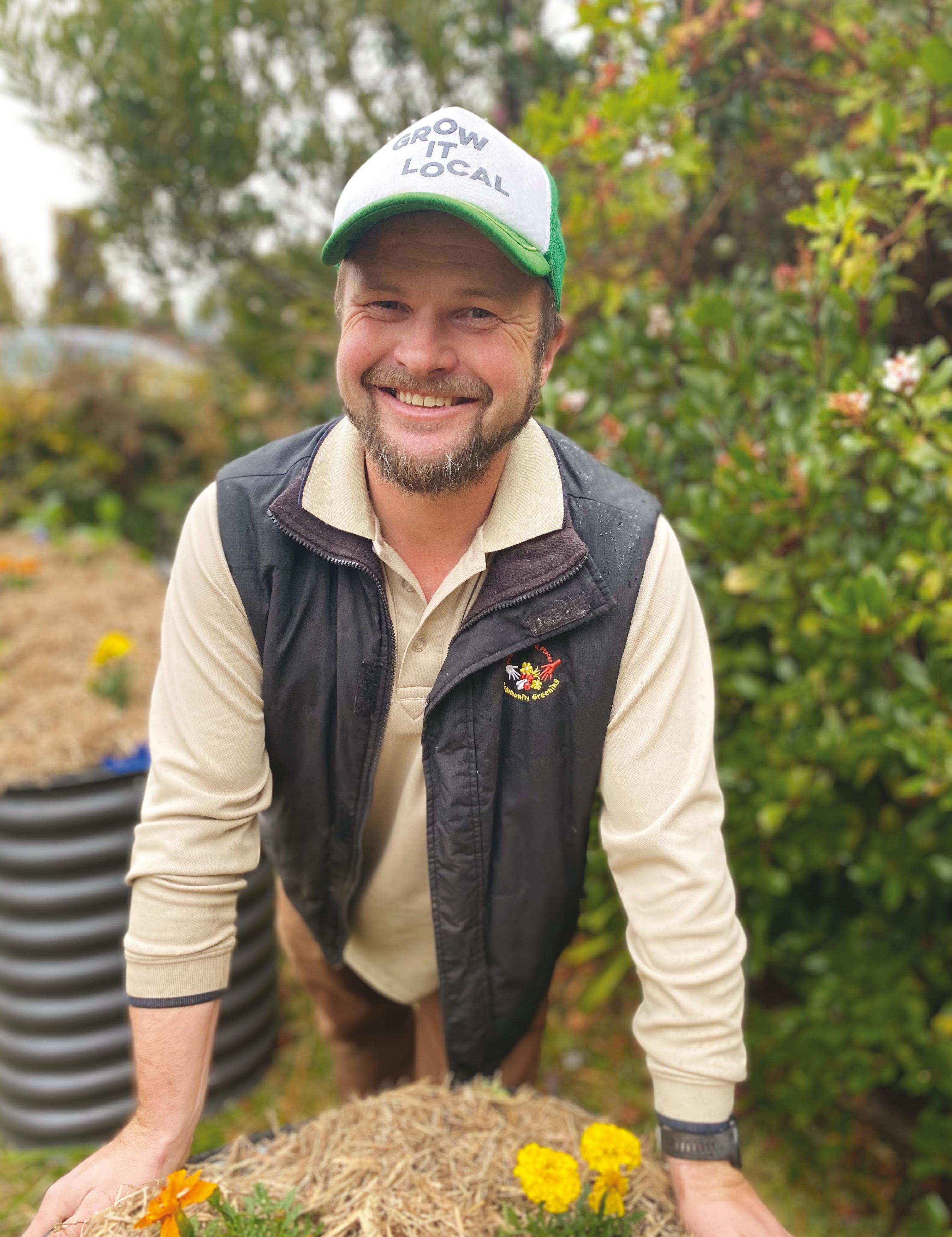
12 THE GARDENS AUTUMN 2023 FIRST PERSON
COMMUNITY GREENING MANAGER
What are your key responsibilities?
My role is to lead and support the Youth and Community Greening team to deliver outreach horticultural education programs across New South Wales. We support communities in social housing and young people in low socioeconomic areas. This includes First Nations communities, refugees and other diverse groups in need. I support the team by ensuring we have funds, materials and resources to deliver our programs in partnership with multiple corporate, government and nongovernment organisations. This involves lots of meetings, travel and coordination. There are many key relationships that need to be maintained and enhanced, while also ensuring that the community is a key stakeholder in the program’s development and delivery. Community Greening is about empowering communities to make the change, and co-design and co-build projects and programs to meet their needs. They could be social and therapeutic programs, food security programs, or horticultural/community training and development and much more. Our programs are guided by people, plants and place.
What first got you interested in plants and how did it lead to a career in the field?

I started gardening from a young age at home and had a family of gardeners, including my parents and grandparents on both sides. I remember a key school holiday when some new neighbours – the Wild family – began landscaping their yard. They bought in massive low loader trucks and craned in huge palms – this was an eye opener for me in how plants could transform space, and I guess looking back, how they could transform people (i.e., me). I later engaged Pete and Tony Wild’s company, Transplant Industries, to work on a
major landscaping project at NSW Parliament House for the Botanic Gardens’ Commercial Horticulture team.
Tell us about your career prior to joining the Gardens in your current role?
Most of my horticulture career has been based at the Royal Botanic Garden, where I trained as an apprentice. I spent a short time away but realised I needed to be around people that really loved the work they did. Prior to joining the Community Greening team, I was the team leader at Government House, a senior propagator and Commercial Horticulture’s senior horticulturist. When I started in Community Greening we had a team of four. We now have a team of 10 incredible staff, including four First Nations roles.
What have been some of the highlights of your work in horticulture therapy?
The biggest highlights are often when people see how plants directly benefit their health and community. The most impactful moments, however, are when you connect with individuals, sometimes after a period of time, and see them move from being a participant to the person delivering these valuable horticultural programs. I’ve seen people go from being unemployed and depressed to now using the skills they learned in our program to support others in need in their communities.
What is your favourite community garden? What makes it so special?
I can’t single one out because there have been many over the years – all with their own special stories, people or plants. But ones that have had the most impact on me recently would include Wilcannia and Bourke for their food security and impact, Granville Restoring Garden for its therapeutic programs and work with new Australians seeking asylum and suffering from trauma, and maybe Myrtle Street Chippendale for its amazing use of space.
When you are not working, what do you like to do?
When I am not working you will find me with friends and family in the mountains or exploring nature with my wife and kids. I love snowboarding and camping in the back country with mates – even though it’s arduous it is serene, and you are exposed to the wilds and beauty of nature. You truly are at the edge of your limits in this type of terrain.
Tell us one thing that might surprise people to learn about you.
I like to ocean swim year-round with a group of mates – I aim for at least one ocean swim and a surf each week when my schedule permits. Also, when I have spare time, I volunteer at my local beach as a lifeguard, which keeps me fit and gets me outside even in bad weather.
13 THE GARDENS AUTUMN 2023
FIRST PERSON
Photos: Phil Pettitt, © Royal Botanic Gardens and Domain Trust
‘People use the skills they learn to support others in need’

14 THE GARDENS AUTUMN 2023 EXHIBITION
Gang Gang Cockatoo by Josh Dykgraaf
ON THE EDGE: SPECIES AT RISK
Australia’s startling loss of species and diminishing biodiversity is the subject of an engaging new exhibition – On the Edge: Species at Risk – at the Royal Botanic Garden Sydney in March/April this year.

Curators Lucette Moore, Robbie Macintosh and Vanessa Snelling have gathered together works from emerging and established artists that show an eco-activist slant – artists who actively campaign through their work to stimulate discussion on climate change and the present state of the Australian environment.
“The brief was that the subject matter must be ‘at risk’,” says Snelling. “The result is a huge cross-section of endangered plants, birds, mammals, fish, reptiles, frogs and insects as well as endangered ecological communities – in fact over 80 different species and several at-risk habitats from all over Australia are represented in the exhibition.”
The way the artists have chosen to represent their concerns is also surprisingly diverse.
Josh Dykgraaf is a commercial artist (“a Photoshop gun for hire”) who works through image manipulation, each finished piece typically containing thousands of Photoshop layers.
“Some time ago I was looking at some shots of mountains I’d taken years ago and observed that the rocky mountain faces looked a bit like the wrinkled skin of an elephant,” says Dykgraaf. “My simple idea was ‘how cool would it be to make an entire elephant out of mountains’, and I took it from that.”
In On the Edge, Dykgraaf offers a Pygmy Possum created from alpine mosses and fungi (featured on the front cover of this edition). He also creates a Gang-gang cockatoo using, ironically, images of burnt leaves, while his White’s Seahorse employs images of PPE gloves discarded outside a city hospital. All three species are suffering significant decline, much of it from habitat destruction.
The plight of Pygmy Possums also caught the attention of Joan McKay, a scratchboard artist and wildlife carer living in Canberra.
“Since the 1990s I’ve been interested in Mountain Pygmy Possums,” she says.
“Fossils were found in 1895 and they were thought to be extinct until in 1996 one was recognised in a ski hut in Mount Hotham, Victoria. I’ve visited several breeding colonies and am grateful to carers who have given permission for me to draw from their photos – these little creatures just don’t stay still for long enough to sketch.
“I use scratchboard because it’s the right medium for me to show feathers and fur. I start with the eyes usually, and aim to show their personalities, to tell their story.
“I want to bring these animals closer to the public, in a realistic way
15 THE GARDENS AUTUMN 2023 EXHIBITION
IN THE NEWEST ADDITION TO FOUNDATION & FRIENDS’ PORTFOLIO OF SCIENCE-THEMED EXHIBITIONS, A DIVERSE RANGE OF ARTISTS WILL HIGHLIGHT A WORLD UNDER THREAT. SUE WANNAN REPORTS.
Banksia fuscobractea by Garth Henderson
so people feel they can touch them, feel the density of their fur and feathers. Scratchboard really brings them to life, you can push the contrast to make them pop out of the background.”
On the Edge is not just about birds and animals. Australian flora features in Cathy Gray’s exquisitely detailed drawings. Working with fine archival pens (.03mm), the result is delicate, reminiscent of an embroiderer’s needlework or lacework. The mandala – a geometric configuration of symbols which in Eastern religions can represent the spiritual journey – features heavily in Gray’s work.
“The circle is calming for me... in the beginning is the end and the end
is the beginning. My drawings take up to 300 hours to complete – I have to work slowly and meticulously, not to seek instant gratification but to see beauty in things that take time."
Gray will exhibit Endangered, in which she has drawn 755 of the 758 currently endangered and critically endangered Australian plant species. This work was highly commended in the 2022 Waterhouse Natural Science Art Prize and won the Dr Wendy Wicks People’s Choice Award.
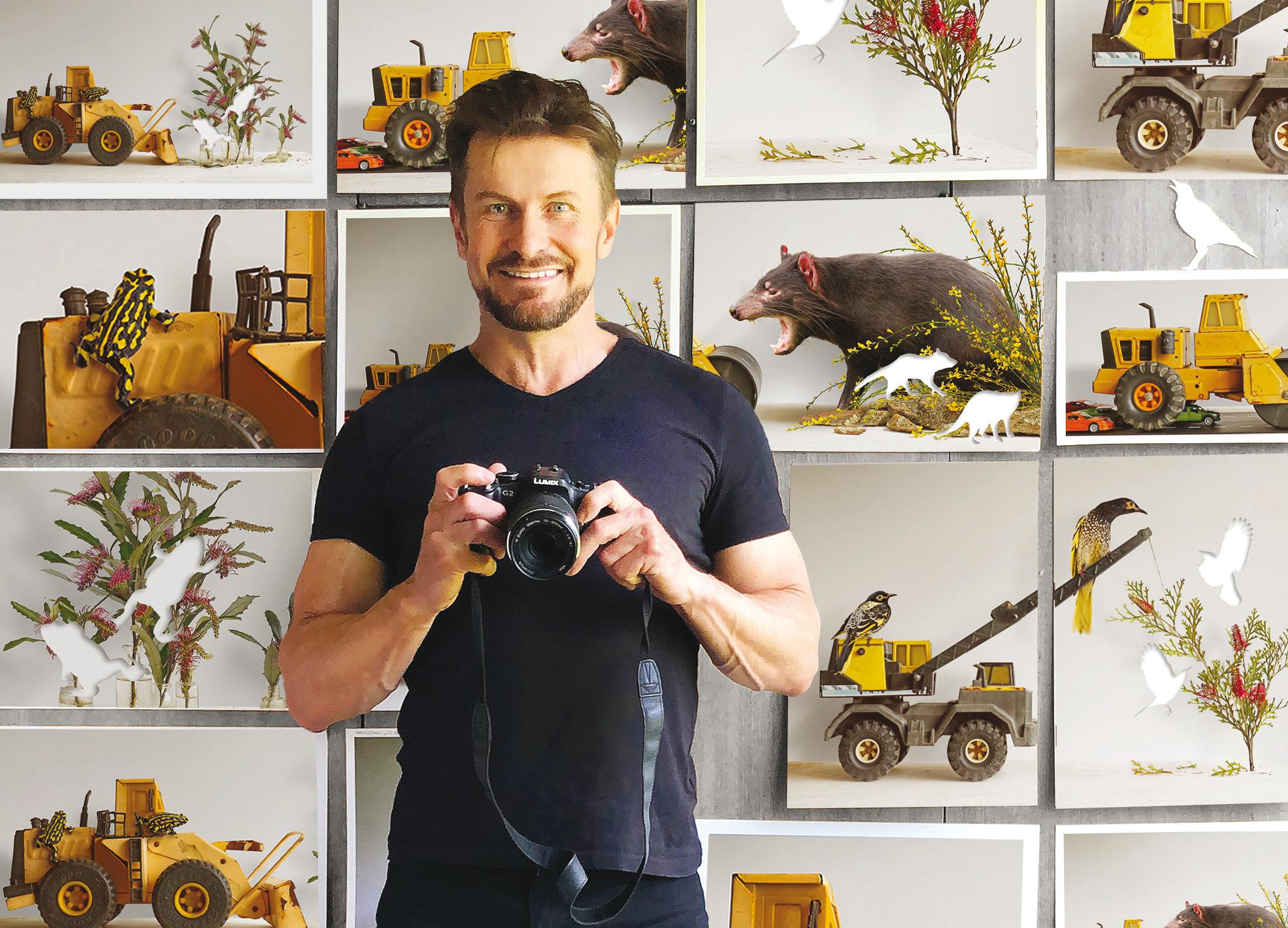
Also on show will be The Battle, NSW invasive species v. critically endangered and endangered species A keen eye will see the invasive species are drawn slightly darker and the endangered ones lighter so as to highlight that these fragile species are disappearing. The third piece will be Transparent – a work created using pin pricks and silk thread.
“I love exhibiting. My work is really small and when people see it in person, rather than a photo, it draws them in,
they have to step right into the art.
“Researching these species has highlighted how many we are on the brink of losing. My list probably isn’t a true indication – there are a fair few that are probably already extinct."
Julianne Ross Allcorn’s watercolour and pencil on birchwood panels is another highlight in On the Edge. The three images can be hung separately or together as a triptych. Unusually, they can be hung vertically or horizontally.
“I love the challenge of making it – every line, every tone has to match, each way,” says Allcorn.
“Each panel has three endangered species in their environment – you have to find them. Because I draw Australian flora and fauna, I have a very strong feeling for what we’re missing, and what we take for granted.”
Allcorn claims she is “not a pure botanical artist” but rather “a drawer who plays with watercolour.” That downplays her skill – listed in an extensive CV of exhibitions, prizes,
16 THE GARDENS AUTUMN 2023
EXHIBITION
‘Over 80 different species and habitats are represented’
Jason McDonald in his studio
and classes is the Trustees Watercolour Prize in the 2020 Wynne Prize and selection in the 2021 Archibald Prize. Another artist to seek out is Robert Mancini who uses a vector program* to produce something rather like a mid-century poster.



“They look quite coarsely brushed – people are surprised as usually vector is quite sharp and slick,” says Mancini.
“The works I’m exhibiting are a departure from my other work. They’re best described as digital art graphic bird portraits. I began it as a creative coping response to the COVID lockdown and to my concern about loss of our avian richness and diversity. It’s very much art meets science. The beauty of the bird, the message of the risk.
*Vector is one of the most common digital image file types. Rather than using pixels, vector files use mathematical equations, lines and curves with fixed points on a grid to build an image. One of the advantages of a vector image is they can be scaled up or down without impacting quality.

17 THE GARDENS AUTUMN 2023 EXHIBITION
Eastern Suburbs Banksia Scrub #1 by Jane Guthleben
Eastern Quoll by Joan McKay
Superb Fruit Dove by Rob Mancini
Mosaic of Palm Cockatoo by Kelly Mackey
"I’d like to halt the viewer long enough to create awareness of what exists and the value of working to ensure that existence.”
For the curators, On the Edge: Species at Risk is an exhibition very close to their hearts.


“The Botanic Gardens is a scientific institution and the perfect venue for exhibitions with an environmental focus,” says co-curator Robbie Macintosh. “Art is a non-aggressive angle that can reach people, reach their conscience, make them think about what we’re doing – and not doing.
“Climate change worries people, understandably,” adds co-curator Lucette Moore. “It’s so overwhelming but breaking it down into information that people can relate to allows them to find a way to be part of the change.”
“All is not lost” says Macintosh. “With serious effort, will and funding there’s still time to act. According to scientists, we just need ambitious action. With this exhibition we hope to make an impact towards achieving that goal.”
18 THE GARDENS AUTUMN 2023
EXHIBITION
Photos: Geoff Sumner
‘ Researching these species has highlighted how many we are on the brink of losing ’
Southern Bent-wing Bat by Nettie Sumner
Quae est super ripam 1,2 & 3 by Julianne Ross Allcorn (each panel can be sold individually)
EDGY CLASSES & EVENTS
A variety of events, classes and demonstrations will run in conjunction with the On the Edge: Species at Risk exhibition, including:
• a 90-minute walking tour of the Royal Botanic Garden's rare and endangered plants

• a small-group tour of the exhibition led by one of our three curators
• a panel discussion in which leading scientists discuss Australia's threatened species and the work being done to save them
• a workshop with artist Jane Guthleben on how to record detailed field notes then use them to compose a painting
• a lesson from artist Nichola Bryan on how to create a striking sustainable bird assemblage with upcycled garden plastics. For more information see this issue’s Diary (page 32).


ON THE EDGE: SPECIES AT RISK
18 MARCH–2 APRIL, 10AM–4PM
Lion Gate Lodge, Royal Botanic Garden Entry is free, and all works will be for sale, with commission going towards a range of programs across the Gardens.
OPENING NIGHT
FRIDAY 17 MARCH, 6PM–8PM
Join us as the exhibition is officially opened by the Hon. Tanya Plibersek MP, Minister for the Environment and Water. We will also warmly welcome our Patron, Her Excellency the Hon. Margaret Beazley AO KC. At this ticketed event you will be able to purchase artworks before the doors open to the general public and there will also be an opportunity to meet this year's artists and curators, while enjoying a glass of Taylors’ wine and some delicious canapés created by Radish Events, in historic Lion Gate Lodge. To find out more or purchase Opening Night tickets please scan the QR code.
19 THE GARDENS AUTUMN 2023
EXHIBITION
Bar Tailed Godwit by Rachel Klyve
Endangered by Cathy Gray
THE BATTLE BENEATH TABLE MOUNTAIN
WITH ROOT ROT DEVASTATING ONE OF THE WORLD’S GREAT BOTANIC GARDENS, CHIEF SCIENTIST AND DIRECTOR SCIENCE, EDUCATION AND CONSERVATION PROFESSOR BRETT SUMMERELL TRAVELLED TO SOUTH AFRICA TO HELP IN THE FIGHT.
Back in 1999 at the 16th International Botanical Congress in St Louis, delegates were asked to vote on the world’s most important botanic gardens based on a range of factors, including the diversity of their living collections, science programs and visitor facilities. Among the elite group named was Kirstenbosch National Botanic Garden in Cape Town, South Africa.
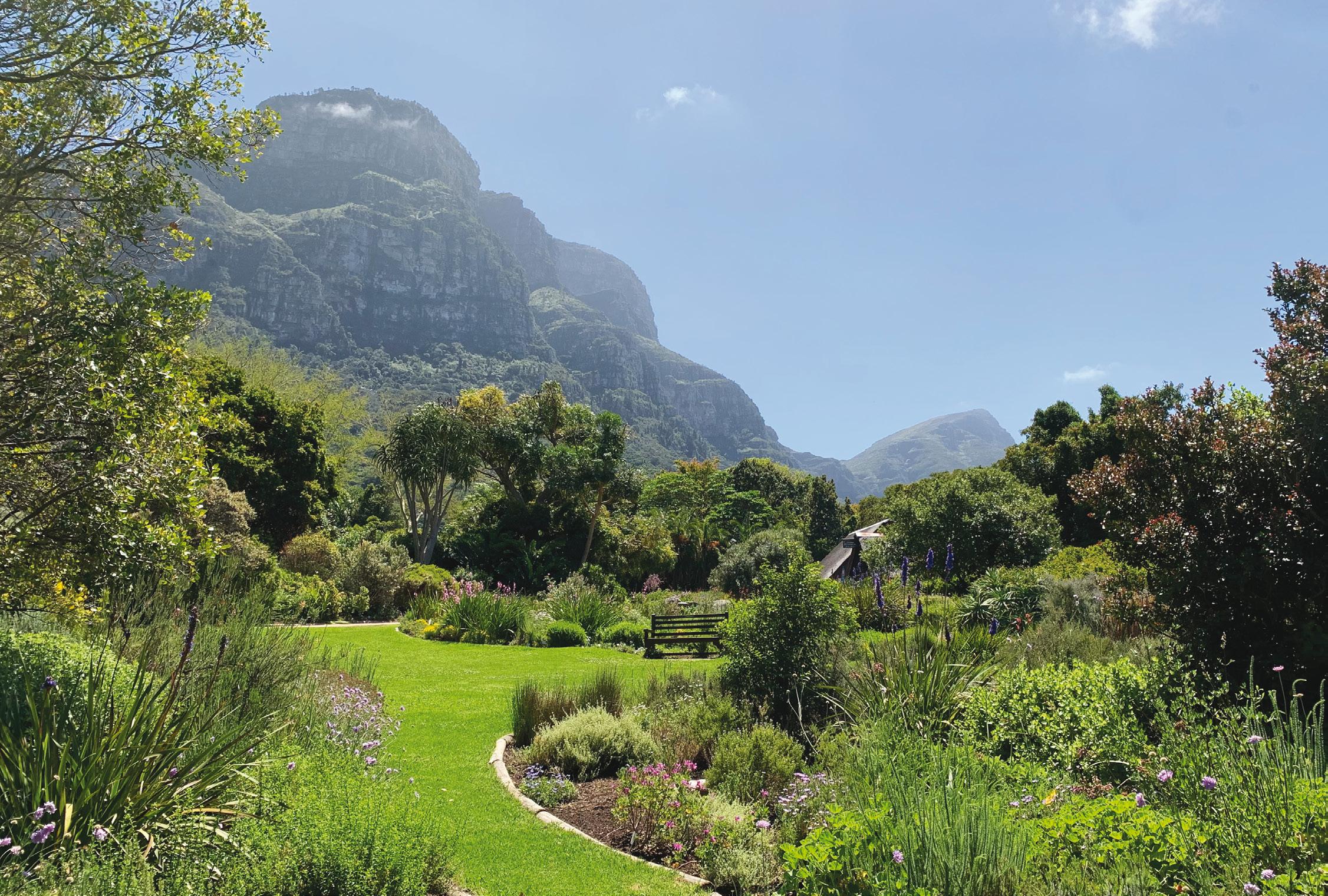
More than 20 years later, it was still on my bucket list of botanic gardens to visit,
so you can imagine how delighted I was to be invited to take part in a recent workshop at Kirstenbosch on botanic gardens biosecurity. The invitation came from the South African National Biodiversity Institute, the University of Pretoria and the International Plant Sentinel Network, which since 2014 has facilitated collaboration among institutes around the world to provide an early warning system of new and emerging pest and pathogen risks. A similar network was set up in Australia
several years ago and it was hoped it could be a model for what might be achieved in South Africa.
Set at the foothills of Table Mountain, Kirstenbosch is one of South Africa’s 10 national botanic gardens. It has a strong focus on Indigenous flora (similar in a way to the Australian Botanic Garden Mount Annan), notably the flora of the fynbos region around Cape Town. The Garden is particularly known for its plants in the Proteaceae family –especially the spectacular species of
20 THE GARDENS AUTUMN 2023 BOTANICAL SCIENCE
Photos: Prof Brett Summerell, © Royal Botanic Gardens and Domain Trust
Kirstenbosch National Botanic Garden sits at the eastern foot of Table Mountain in Cape Town
Protea, Leucadendron and Leucospermum found in the Cape region. It also boasts remarkable collections of cycads, restios and other South African favourites.
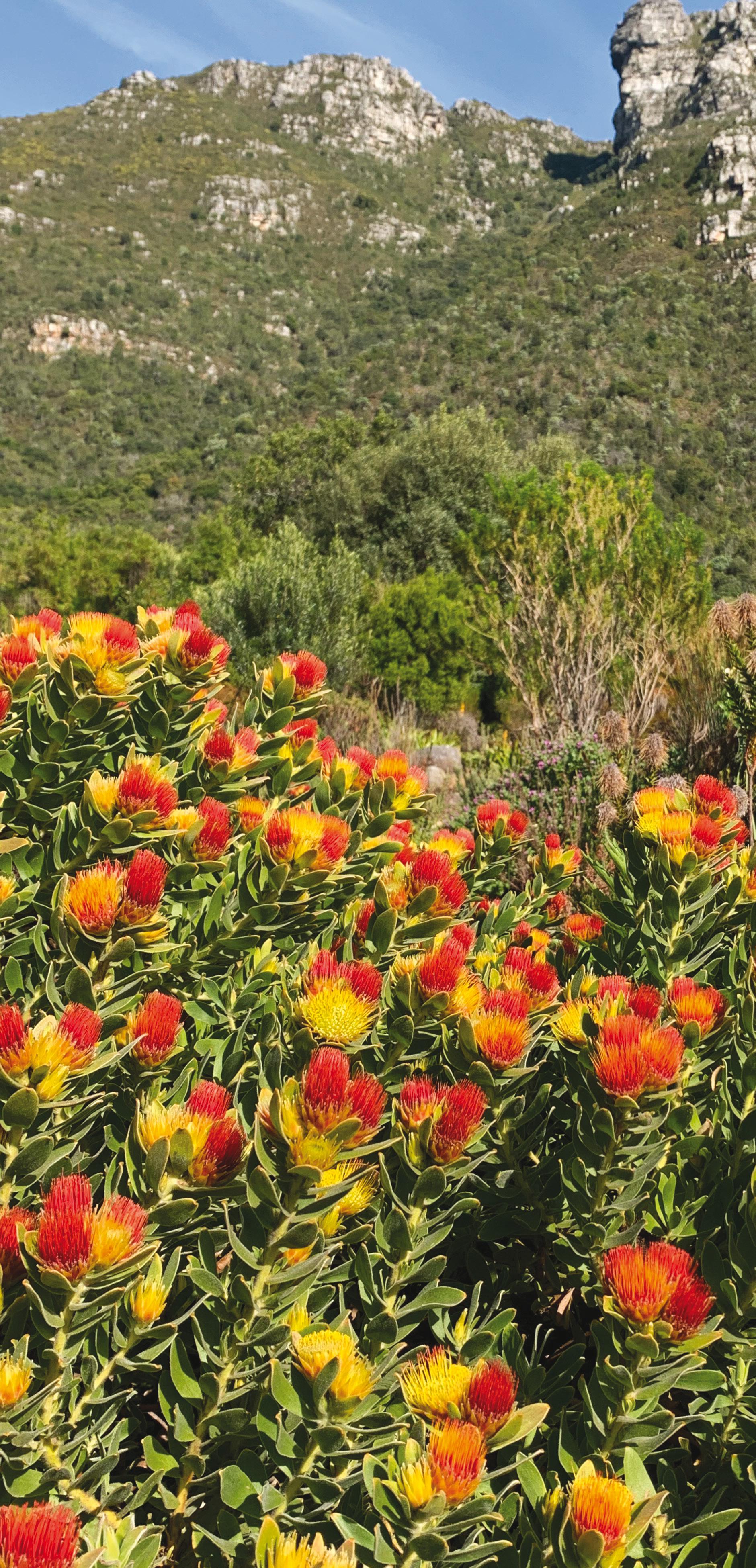
Unfortunately, areas of the Garden have been infested by the root rot pathogen, Phytophthora cinnamomi, which has particularly devastating effects on members of the Proteaceae family. It is estimated that over the past decade the diversity of Proteaceae species able to be grown in the Garden has dropped by half – problematic, given that visitors come specifically to see these plants.
The disease is having an enormous impact on the local endemic Silver Tree, Leucodendron argentea, found in the area around the Garden, and up to Table Mountain. This species is extremely sensitive to Phytophthora root rot and will start to show symptoms within a couple of weeks after the pathogen is introduced. Significant efforts are underway to develop techniques to manage the disease and protect the tree from its effects, with the use of potassium phosphonate (sold as AntiRot) showing strong promise as a control option that is safe and cost-effective.
Against this backdrop, the workshop was held at Kirstenbosch, with participants including horticultural and records staff from six botanic gardens across South Africa. Sessions were held on disease management and prevention in collections and the production nurseries, and attempts were made to trouble shoot issues and enhance techniques. While the initiative identified a number of options for improving practices, unfortunately a lack of resources may undermine what can ultimately be achieved.
At Kirstenbosch I was brought up to speed about the issue of illegal plant harvesting in southern African ecosystems. At the Garden they receive up to 6,000 plants per week that have
21 THE GARDENS AUTUMN 2023 BOTANICAL SCIENCE
‘The diversity of Proteaceae species able to be grown has dropped by half’
Leucospermum oleifolium, a member of the family Proteaceae
been seized by authorities and need identifying, then cultivating in the nursery. This presumably is only the tip of the iceberg in terms of the number of plants that are actually removed for the black market. This is of course a huge impost for Kirstenbosch staff and one for which they receive no additional funding. Most of the species seized are succulents, highlighting the downside of the current popularity of these types of plants.

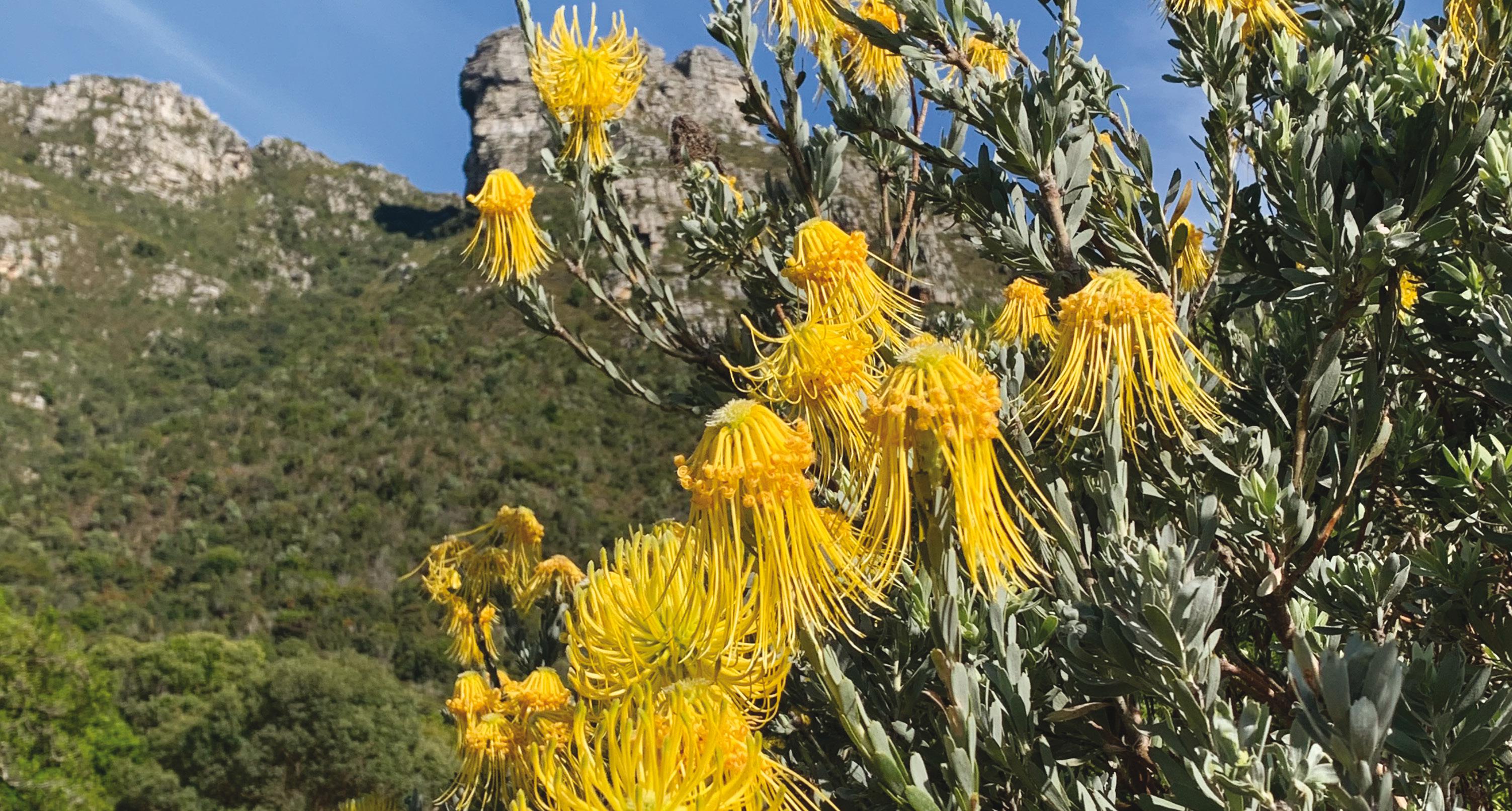
After the workshop I travelled to Pretoria and Johannesburg for presentations and discussions with students. While there I took the opportunity to inspect a number of trees affected by an insect known as the polyphagous shot hole borer. This tiny beetle bores holes into stems and limbs of a broad range of trees, creating a network of tunnels in the timber. Unfortunately, in cavities behind its mouth parts it carries a Fusarium fungus, which once introduced spreads and slowly kills the tree. Susceptible species include Box Elder (Acer negundo), plane trees (Platanus species), coral trees (Erythrina species) and figs (Ficus species including Moreton Bay Fig) – all of which are, of course, a huge component of Sydney’s tree population.
This beetle and fungus have recently been detected in a number of trees in

Perth – including some in Kings Park and Botanic Garden. This sparked a huge biosecurity operation that which resulted in the destruction of around 300 trees and raised awareness of this pest and pathogen. It was extremely useful to see first-hand the impact in South Africa and to understand the symptoms and necessary management of the problem. It is anticipated that over half of the tree population in Johannesburg could be killed over the next 10 years – involving the removal of millions of trees.
Sydney urban landscapes are heavily populated with many of these very susceptible species and the potential impact should it arrive (or perhaps, when it arrives) would dramatically alter our streets, urban parks and their amenity. In addition, the impact it might have on tree species in our native landscapes is unknown, making it essential that we undertake every effort to prevent its introduction.
22 THE GARDENS AUTUMN 2023
Photos: Prof Brett Summerell, © Royal Botanic Gardens and Domain Trust
BOTANICAL SCIENCE
‘Over half of the tree population in Johannesburg could be killed’
Rocket Pincushion (Leucospermum reflexum var. luteum) at Kirstenbosch National Botanic Garden
Damage caused by the Polyphagous Shot-hole Borer on a plane tree in Pretoria
Silver tree (Leucodendron argentea)
BOTANIC GARDENS: AGENTS OF CHANGE
GARDENS STAFF ENJOYED A STRONG PRESENCE AT THE RECENT GLOBAL BOTANIC GARDENS CONGRESS, WHERE CONSERVATION AND COOPERATION DOMINATED THE AGENDA. DIRECTOR OF HORTICULTURE AND LIVING COLLECTIONS JOHN SIEMON REPORTS.
Late last year professionals from around the world convened in Melbourne for the only global congress dedicated to botanic gardens, with staff from the Gardens playing a key role by delivering presentations, chairing sessions and running workshops.*

It was only the second time the Global Botanic Gardens Congress (GBGC) had taken place in the southern hemisphere and Gardens staff embraced the opportunity, with highlights including:
• Dr Cathy Offord presenting on Australia’s conservation seed banks and how citizen science can help ex situ conservation of threatened plant species
• Peter Dawe delivering a touching and emotional address on the support the Youth Community Greening program provided to the Cobargo community after the devastating 2019 bushfires
• Sophie Daniel and Dr Marco Duretto sharing the floor to demonstrate the ability of the new National Herbarium of NSW public interpretation model to engage, inspire and empower visitors
• Michael Elgey highlighting the Australian Botanic Garden Mount Annan’s battle against aggressive woody weed, African Olive, and what life may look like after the last olive branch is removed
• Catherine Judd sharing the future vision for the Trust’s Sustainability Strategy and Action Plan
• Ian Allan bringing a few delegates to tears with a powerful talk entitled ‘From drought and bush fires, to floods and landslides – what we’ve learned to improve the resilience of our living collections in the face of climate change’.
The Gardens was also well represented when it came to the awards announced at the seventh conference – held in Melbourne and attended by 500 delegates from 36 countries. Dr Amelia Martyn Yenson, a former Gardens’ employee and key collaborator, was presented with the Marsh Award for International Plant Conservation, while Caitlin Abela received the Young Member Award.
23 THE GARDENS AUTUMN 2023 HORTICULTURE
The Gardens' horticulture team at the Global Botanic Gardens Congress
Among the stellar line-up of international and local speakers there were many thought-provoking presentations. A particular standout was Professor Cristina Lopez–Gallego from the University of Antioquia, who left the audience in awe at the staggering mega-biodiversity of Columbia. The country, a mere 15% of the size of Australia, holds almost 10% of the world’s biodiversity, ranking number one for orchid (around 4,270 species) and bird species, second in the world for plants (22,840), amphibians, butterflies and freshwater fish, third for palm and reptile species, and fourth in mammalian biodiversity. To put this in context, Australia has approximately 24,000 species of plants.
Botanic Gardens Conservation International (BGCI) Secretary General Dr Paul Smith also captured attention by calling on professionals to move away from telling stakeholders about the


24 THE GARDENS AUTUMN 2023
HORTICULTURE
Photos: © Royal Botanic Gardens and Domain Trust
(L-R): Dale Arvidsson, Denise Ora, Tim Entwisle, Judy West and Alan Barrett
Delegates from Forestry England visited the Australian Botanic Garden following the Congress
conservation challenges we face, and instead inform them on how our work is successfully solving many problems.
Recurring messages appeared throughout the conference program, with “conservation horticulture” a dominant theme. Conversations particularly focused on how we might empower the next generation of professionals by developing and rewarding specialist skills that help achieve exceptional outcomes for the globe’s ex situ living collections.
Unsurprisingly, collaboration was also high on the agenda, with delegates acknowledging that the sharing of knowledge and expertise is vital as botanic institutions deal with the impact of climate change and threats to biodiversity. That means exchanging information and living material among seed banks and botanic gardens and their nurseries, while at the same time optimising networking, alliances and data sharing.
Many botanic institutions shared experiences on how climate changerelated disasters were already having a dramatic effect on ecosystems, biodiversity and living collections. Several discussions and workshops were dedicated to assisting botanic gardens prepare Climate Adaptation Plans for their collections and landscapes, as well as disaster plans.
At the same time, botanic gardens were challenged as to how they can help restore ecosystems through, for example, large-scale tree planting for carbon-sequestration. The scale of the challenge, however, only highlighted the fact that we simply don’t have enough available seed, let alone the seedbanks, skills and data required, to combat the changing climate, impact of invasives and habitat destruction.
As is often the case, the conference’s formal and informal networking events
proved a highlight – providing as they do, a rare opportunity to meet or reconnect with long-standing international colleagues. Gardens’ staff also relished the opportunity to participate in some pre- and postconference tours to botanic, public and private gardens, as well as a number of specialist nursery suppliers.
The entire team left the Congress re-energised, inspired and driven to continue our efforts to conserve, research, educate and inspire.
A LESSON IN RESILIENCE
After experiencing successive natural disasters and climate related events, staff at the Blue Mountains Botanic Gardens are well placed to pass on some of the hard lessons they’ve learned.
At this year’s Global Congress, Supervisor Natural Areas & Arboriculture, Ian Allan, did just that, specifically focusing on living collection and garden management.
“My hope was to promote conversation and awareness around the easily overlooked practical impacts and problems we had encountered,” says Allan.
“These include such things as the valuation of living collections as an insured asset, and the need for accurate records to enable assessment of natural disaster impacts.
“Other issues include staff wellbeing, training and preparedness to maintain core garden maintenance duties, and to respond to extended garden closures, water security, and even simple considerations such as whether plant tags can withstand fire.”
For Allan the Melbourne Congress was “inspiring and informative”, particularly sessions on global tree conservation and the field trips to gardens and nurseries, which provided opportunities to “glean ideas on everything from garden signage to pruning techniques, plant sales and landscape design”.
AN INSPIRING INTERPRETATION
The National Herbarium of New South Wales’ innovative approach to interpretation took centre stage at the recent Global Botanic Gardens Congress, with a presentation focusing on the new facility’s four massive ‘Specimen Walls’.
Sophie Daniel and Dr Marco Duretto told delegates the interpretation aimed to:
• hero the Herbarium’s collections and the Gardens’ staff
• spotlight the relationship between the Australian Institute of Botanical Science’s work and Australian flora
• engage visitors with important issues of conservation, climate change and environmental sustainability
• increase understanding of the importance of plant conservation and sustainable solutions, encouraging visitors to act on behalf of local and global ecosystems.
A key contributor to its success, they said, was the “truly collaborative creative process” undertaken, which involved staff, external research partners, Dharawal First Nations community, designers and many others.
“Through personal stories, plant heroes and stunning imagery, the resulting interpretation offers an immersive sensory exploration of diverse Herbarium and living plant collections,” the pair told the international audience.
“Following the Connect–Understand–Act model of behaviour change, the interpretation aspires to have a truly life-changing effect on our visitors. The stories carry a sense of hope, inspiring visitors through stories of positive conservation outcomes, role-modelling sustainable behaviours and galvanising them towards positive action for the future.”
25 THE GARDENS AUTUMN 2023 HORTICULTURE
*Almost 20 staff from across the Gardens attended the 7th GBGC, with travel costs for more than half of them covered by the Lorna and Clive Backhouse Scholarship. The next congress will be held in Singapore in 2024.
‘Botanic gardens were also challenged as to how they can help restore ecosystems’
TRAVEL WITH FRIENDS
COOL CLIMATE GARDENS IN THE SOUTHERN HIGHLANDS, DESERT LANDSCAPES IN CENTRAL AUSTRALIA, RARE TROPICAL FAUNA IN NEW CALEDONIA AND CHARMING TEA HOUSES IN JAPAN – FOUNDATION & FRIENDS IS OFFERING SOME SPECTACULAR BOTANICAL-THEMED TOURS IN 2023 AND BEYOND.

For more information or to book please contact us at foundation.friends@botanicgardens.nsw.gov.au
HARTLEY GARDENS AND BEYOND: HEADING FOR THE HILLS!
27–29 March 2023
Grade: Introductory
Accommodation: three nights
Come on a journey to some spectacular cool climate gardens, including one of the largest privately-owned gardens in the Southern Hemisphere. Enjoy views, heritage, great garden designs and rare plants, while staying at The Hydro Majestic.
Member price: $1,675pp twin share
$375pp single supplement
Escort: Foundation & Friends’ Meredith Kirton, author of eight books on gardening.

CENTRAL AUSTRALIA
5–14 May 2023
Grade: Moderate*
Accommodation: eight nights
There are still some spots available on our trip to the Larapinta Trail, led by Relle Mott. Experience rich desert landscapes as you follow the Trail along parts of the West MacDonnell Ranges, staying in award-winning eco-comfort camps and visiting intriguing desert parks and botanic gardens.

Member price: $4,690pp twin share (land content only)

NEW CALEDONIA
4–16 November 2023
Grade: Introductory*
Accommodation: 15 nights
Thanks to a complex geology and its isolation from other landmasses for at least 45 million years, New Caledonia has evolved a highly diverse flora and fauna, characterised by high levels of endemism and botanical novelty. Add to the mix a combination of Indigenous Kanak and colonial French cultures, you have a truly intriguing destination. Member price: to be confirmed
Escort: Peter Weston, a former Senior Principal Research Scientist with the National Herbarium of New South Wales.
NORTHERN JAPAN SUMMER FESTIVALS AND GARDENS
1–15 August 2024 Grade: Introductory* Accommodation: 14 nights
Join Relle Mott for an adventure in the sweeping landscapes of Aomori and Hokkaido. These prefectures are wilder, less populated and mostly off the beaten track for foreign tourists. The highlight of our tour will be visiting the Dan Pearson designed Tokachi Millenium Forest on the ‘garden route’ of central Hokkaido. Summer in northern Japan means lively festivals, delicious food and beautiful weather.
Member price: $10,300pp
26 THE
2023
GARDENS AUTUMN
Photos: David Kennedy, World Expeditions, Peter Cuneo, photo-ac.com, Alamy.com, © Royal Botanic Gardens and Domain Trust
*These adventures are not suitable for people with limited mobility. They are designed for participants with a reasonable level of fitness and competent swimming ability. Some days may be quite active and involve steep walks. Prepare with regular moderate exercise.
TRAVEL
Tokachi Millennium Forest
Walking the Larapinta Trail
Highfield Garden in Little Hartley Xeronema moorei overlooking the Pacific Ocean
PLANTS IN THE GARDENS
DISCOVER MORE ABOUT THE WONDERFUL PLANTS TO LOOK OUT FOR NEXT TIME YOU VISIT THE GARDENS.
Pineapple Cycad
Lepidozamia peroffskyana
Family Zamiaceae
Many people identify cycads as relatives of palms or ferns. However, they are not related to either plant group, but form a unique place in plant evolution, being at their peak in the Mesozoic era, about 150 million years ago.

There are only two living species in the genus Lepidozamia, which was first described by Russian botanist Edmund von Regel in around 1857. It is said that this was described from a specimen in the St Petersburg Botanic Garden.
Of the two known species alive today, Lepidozamia hopei is native to north-east Queensland in the area from Cooktown south to Ingham. This species is suited to warmer regions, preferably the tropics.
Lepidozamia peroffskyana, native to south-east Queensland and north-east New South Wales, occurs naturally on sheltered slopes of wet sclerophyll forests and rainforest margins as an understorey plant. Male and female cones are produced on separate plants. Curved male cones have wedge-shaped scales that open spirally to release pollen. Female cones are broad, forming a rounded mound in the crown of the plant. Scales on female cones are broad and wedge-shaped with pointed tips. Mature fertilised cones open to reveal large bright-red seeds which are toxic. Plants can only be propagated from seed that take many months to germinate.
Lepidozamia is a very desirable plant, which can be enjoyed as a potted plant or a garden specimen. It is best grown in partial shade with shelter from strong
winds, although plants can also tolerate quite heavy shade. It may be grown in sunnier situations, but foliage colour may not be such a deep lustrous green. All cycads do much better in a very low organic matter growing medium and kept in a warm sheltered location. These plants do not like being mulched as it kills off any coralloid (specialised roots) and changes the soil pH unfavourably. Water deeply but allow the soil to dry
out a little between waterings. A regular occasional application of liquid fertiliser is beneficial during the growing season. These plants are thriving in the Royal Botanic Garden Sydney in the Palm Grove with an excellent specimen in bed 25 near the path leading to the Main Depot. Growing Friends Plant Sales frequently has specimens for sale. Margaret Hanks, Growing Friends, Royal Botanic Garden Sydney
27 THE GARDENS AUTUMN 2023 PLANTS
‘Large bright red seeds contain toxic compounds’
Lepidozamia peroffskyana
ROYAL BOTANIC GARDEN SYDNEY
While we may not boast the Blue Mountains Botanic Garden’s amazing display, we still have plenty of autumn colour on show.
There are, for instance, the beautiful golden leaves of Ginkgo biloba, good examples of which can be found in the Middle Garden, near the Spring Walk and Visitor Centre.
There are also many interesting flowering trees at their best in autumn. Bauhinia x blakeana, commonly known as the Hong Kong Orchid Tree, starts flowering in March with its spectacular orchid-like pink blooms. A lovely example can be found in the Tropical Garden beside the Band Lawn.

Along a similar theme is Ceiba speciosa, the Silk Floss Tree, which is a member of the Malvaceae family. Two of these spectacular trees can be found in bed 60 and the adjacent native rainforest (near the large topiary echidna).
One of the most spectacular autumn flowering plants is the Brazilian Red Cloak Megaskepasma erythrochlamys * These easy-to-grow shrubs can be found brightening up the entrance to the Palace Garden beside the Conservatorium of Music.

While in the area its always worth checking the last flush of flowers in the Rose Garden. The team has worked incredibly hard over the last number of years trailing rose varieties to find the perfect roses for Sydney’s climate.
The Wildflower Meadow is finishing its flowering, but we retain the plants to encourage seed to form and naturally regenerate for the following spring and summer display.
This is a lovely time of year when the horticulturists can catch up after a busy summer of chasing weeds and managing the explosion in plant growth.
David Laughlin, Curator Manager
28 THE GARDENS AUTUMN 2023
PLANTS
Photos: Alamy.com, Meredith Kirton, © Royal Botanic Gardens and Domain Trust
Megaskepasma erythrochlamys
Ceiba speciosa flower
‘One of the most spectacular autumn flowering plants is the Brazilian Red Cloak’
*regularly on sale at Growing Friends Plant Sales.
AUSTRALIAN BOTANIC GARDEN
Autumn is one of my favourites times of the year, with the summer heat beginning to fade and plants getting some welcome relief. At the Australian Botanic Garden Mount Annan, autumn is a time to refresh and revitalise as we remove the summer annual display and begin preparing for spring.
The cooler weather provides the perfect opportunity to plant as we continue to boost and renew our displays.
If you are wondering what to keep an eye out for, autumn is a great time for Brachychiton, Brachyscome, Grevillea, palms and banksias. Banksia aemula (Wallum Banksia) is a beautiful species to investigate further as you navigate the Garden. This species is very similar to Banksia serrata, the Saw Banksia, but can be easily differentiated because of the Wallum Banksia's enormous woody follicles.
 Jarryd Kelly, Supervisor Horticulture
Jarryd Kelly, Supervisor Horticulture
BLUE MOUNTAINS BOTANIC GARDEN
Typically smelt before they’re seen, Luculias (Luculia gratissima) are one of the highlights of the Blue Mountains Botanic Garden in autumn, drawing visitors around to the barbecue lawn and through the Brunet Garden.
The species epithet ‘gratissima’ means ‘most pleasing’ and it’s no wonder, as the soft pink clusters of
flowers brighten up the late autumn months as the trees lose their leaves and the Garden prepares to hibernate. Native to the Himalayas, where in its natural habitat it can grow to six metres, Luculia is the most enquired after plant in the Garden every autumn.

Marion Whitehead, Supervisor Ornamental Gardens and Nursery
GROWING FRIENDS PLANT SALES

Royal Botanic Garden Sydney* Mon–Fri 11am–2pm, Sat 10am–2pm
Australian Botanic Garden
Mount Annan
Mon–Sun 9am–4pm
Blue Mountains Botanic Garden Mount Tomah Mon–Sun 9.30am–4.30pm
*Open Sun 10am-2pm from 30 April
29 THE GARDENS AUTUMN 2023 PLANTS
Luculia gratissima
Banksia aemula
WHAT’S ON
Here is just a taste of what is on offer across our three Gardens. For more information about events, and to book, visit botanicgardens.org.au/What-s-On or just point your mobile device's camera at the QR code on this page, then tap the notification to open the link. Alternatively, phone us on (02) 9231 8182. All activities have been planned with your safety in mind, including social distancing and hygiene measures.

CLASSES & WORKSHOPS
ART KINTSUGI WORKSHOP
with Yoko Kawada
Royal Botanic Garden, Maiden Theatre
Thu 27 April or Fri 28 April, 10am–3pm
Join Yoko Kawada in the Garden for this unique hands-on workshop. Kintsugi is a century-old Japanese craftwork, where broken ceramic objects are pieced back together using lacquer and gold dust, finding beauty in imperfection. This process transforms rescued objects in a sustainable way to create a new piece of art. You will produce your own Kintsugi art to take home. Lunch is provided.

From $190
STILL LIFE PAINTING WITH

ACRYLICS with Charlotte Thodey Maiden Theatre, Royal Botanic Garden

Wed 1–Thu 2 March, 9.30am–4pm
Autumn is harvest time and could there be a better way to celebrate? This still life workshop will focus on composition, tone and colour. Explore your individual style, ranging from a loose open brush to finely detailed work. You'll be making use of seasonal fruit, foliage, vegetables, china and linen as props. Learn to make big decisions about small things and clear the mind. Light lunch included.
From $300
EN PLEIN AIR
with Cilla Campbell
Royal Botanic Garden, Maiden Theatre
Wed 3, 10, 17 & 24 May, 10am–12.30pm
Over four Wednesday mornings, join artist Cilla Campbell for roaming plein air classes in the Garden. This course is for anyone wishing to draw in captivating surrounds guided by an en plein air artist and teacher. Using simple drawing techniques and minimal art materials, you will gain confidence to explore an endlessly fascinating subject. Price covers four classes and morning tea.
From $275
FRESH FLORAL JEWELLERY with

Peony Story
Royal Botanic Garden, Maiden Theatre
Thu 11 May, 2pm–4pm
In preparation for Mother’s Day, join the wonderful floristry team at Peony Story for a floral jewellery workshop that showcases the beauty of locally grown flowers. Using seasonal varieties, you’ll be encouraged to unbridle your inner-artist with expert guidance to create unique pieces of wearable accessories. A delicious afternoon tea will be provided.
From $175
30 THE GARDENS AUTUMN 2023
Photos: Glenn Smith , Anna Voytsekhovich, © Royal Botanic Gardens and Domain Trust
DIARY
CLASSES & WORKSHOPS
REIGNITE YOUR CREATIVE SPARK
with Sue Liu
Royal Botanic Garden, Maiden Theatre
Tue 16 May, 10.30am–1pm
"I’m not creative ...I used to draw, but I haven’t done it for a long time ...I’ve lost my creativity”. Does this sound like you? This powerful and practical workshop is designed to help those who feel creatively blocked, stuck for inspiration and wishing to reignite their artistic side. Facilitated by author and artist, Sue Liu (aka Wildcard Sue). Morning tea included.
From $75
SCRAPBOOK JOURNAL

with Johanna Clough
Royal Botanic Garden, Maiden Theatre
Sat 20–Sun 21 May, 10am–1.30pm
Join handmade book artist and paper designer Johanna Clough for this two-day workshop encompassing each step of making your very own handmade journal, sketchbook or scrapbook. Learn simple but effective book-binding techniques and skills to continue your new obsession independently! Suitable for beginners and experienced crafters. Materials and lunch included.
From $460
FUNGI IN BOTANICAL ART with Anna Voytsekhovich

Royal Botanic Garden, Maiden Theatre, Wed 24–Fri 26 May, 9.30am–4pm

Learn botanical art from Anna Voytsekhovich, a professional scientist, scientific illustrator, botanical artist and wildlife illustrator. During the workshop, you will learn about the main morphological groups of fungi and Anna will demonstrate different watercolour techniques. Students will produce an initial drawing of selected fungi, and learn what to include in a composition. Lunch included each day.
From $400
AT THE AUSTRALIAN BOTANIC GARDEN
LEARN FROM THE EXPERT –NATURE PHOTOGRAPHY
• Bird Photography
Sun 26 March, 8.15am–1pm
• Fungi (mushroom) Photography
Sun 23 April, 8.15am–1pm
• Plant Photography
Sun 28 May, 8.15am-1pm

Take your nature photography to the next level with nature lover and award-winning photographer, Glenn Smith.

$120
PROPAGATION WORKSHOP
with Greg Lamont and Carol Griesser
Sat 15 April, 9.30am–12.30pm
Join horticultural adviser Greg Lamont and Growing Friends coordinator Carol Griesser for a morning of gardening. Learn the fundamentals of potting mixes and plant care, and how to prepare cuttings and seeds from a wide range of plants. Morning tea included.
From $70

31 THE GARDENS AUTUMN 2023 DIARY
Carol Griesser and Greg Lamont
ON THE EDGE: SPECIES AT RISK EXHIBITION & ASSOCIATED EVENTS


ON THE EDGE OPENING NIGHT
Royal Botanic Garden, Lion Gate Lodge
Fri 17 March, 6pm–8pm
Join us for the celebratory opening night of our brand-new exhibition
On the Edge: Species at Risk. You'll get the opportunity to mingle with the participating artists and our three curators, enjoy Taylors' wines along with delicious canapés created by Radish Events, and shop for exquisite pieces of artwork before the general public in the beautiful gardens surrounding historic Lion Gate Lodge.
From $55
ON THE EDGE: SPECIES AT RISK EXHIBITION
Royal Botanic Garden, Lion Gate Lodge. Sat 18 March–Sun 2 April, 10am–4pm This exhibition explores nature in peril – highlighting Australian flora, fauna and habitats that are threatened by climate change, development, introduced species and other environmental issues. A diversity of endangered and vulnerable species and ecological communities are showcased across the mediums of painting, drawing, printmaking, photography, ceramics, woodwork and textiles. Each artwork will be accompanied by an artist's statement outlining the threat the species or environment is facing. Free
FOOD WITH FRIENDS CAF É
Royal Botanic Garden, Lion Gate Lodge
Sat 18 March & Sun 19 March, Wed 22 March–Sun 26 March, Wed 29 March–Sun 2 April, 10.30am–2.30pm
Visit the exhibition’s very own pop-up café where you can indulge in fresh coffee, sandwiches and delicious homemade treats right in the heart of our exhibition precinct. Take this opportunity to sit among the fine artworks, served by our incredible catering volunteers. All proceeds from the café will benefit our continued support of the Botanic Gardens.

PLANTS IN PERIL WALK –RARE & ENDANGERED PLANTS

Royal Botanic Garden, Foundation & Friends’ Terrace
Sat 18 March, 10.30am–12noon
Some 1,362 of Australia’s 22,500 vascular plants are listed as threatened at a national level and at least ten times this number by State and Territory jurisdictions. Join Paul Nicholson and volunteer guides Ann Webber and Pam Davis to discover some of the endangered plants in our living collection and what scientists are doing to conserve them.
From $40
ON THE EDGE EXHIBITION TOUR
with the Curators
Royal Botanic Garden, Lion Gate Lodge
Wed 22 March, 10.30am–11.30am
Mon 27 March, 2pm–3pm
Fri 31 March, 10.30am–11.30am
Sit in Lion Gate Lodge’s garden and enjoy a delightful morning or afternoon tea followed by a tour of the On the Edge: Species at Risk exhibition. Enjoy this exclusive small-group experience where you will be able to chat to a curator as she guides you through the exhibition.
From $30

32 THE GARDENS AUTUMN 2023 DIARY
Photos: Bigga Haataja, Meredith Kirton, Glenn Smith, © Royal Botanic Gardens and Domain Trust
Bush Stone Curlew by Joan McKay
Wollemi Pine cone
Wubin by Josh Dykgraaf
ON THE EDGE EXPERT PANEL
with MC Costa Georgiadis
Royal Botanic Garden, Maiden Theatre
Thu 23 March, 3pm–4pm
Join Dr Brett Summerell, our Chief Scientist and Director Science, Education and Conservation; Professor Maria Byrne, aquatic species expert; and Dr Elspeth McLennan, Postdoctoral Research Associate, Koala Genome Survey, Sydney University. Learn about the latest conservation work. Costa Georgiadis, host of ABC’s Gardening Australia, will take questions from the floor.
From $40
BRUNCH WITH THE BIRDS AND DR HOLLY PARSONS
Royal Botanic Garden
Foundation & Friends’ Terrace
Thu 30 March, 7.30am–10.30am
Meet some of the the Royal Botanic Garden’s most noisy residents, the birds, with our expert volunteer guides and join Dr Holly Parsons from Birdlife Australia for a talk about our endangered feathered friends. The morning will conclude with a delicious brunch. Don’t forget to wear comfortable walking shoes and bring your binoculars.
From $45
Eastern Suburbs Banksia Scrub
by Jane Guthleben
FROM FIELD NOTES TO THE STUDIO
with Jane Guthleben
Royal Botanic Garden, Maiden Theatre
Fri 24 March, 10am–3pm
Take notes in the field and develop them into paintings using the Garden as your inspiration. You will be guided in observing and recording endangered flora, using your detailed field notes to compose a painting back in the studio. All levels of experience are welcome. The class is led by artist Jane Guthleben who is exhibiting at On the Edge: Species at Risk. Light lunch included.

From $120
DECORATE YOUR OWN CHOCOLATE BILBY
Royal Botanic Garden, Maiden Theatre
Sat 1 April, 11am–12noon
Decorate a chocolate bilby for Easter with a range of coloured icing, sprinkles, smarties and silver pearls. As you create your fantastic edible art, you’ll learn about our threatened species and the important programs our horticultural staff and scientists are engaged in to protect habitat. Perfect for all ages. Please note, children under 10 will need an adult’s help.

From $35
BEAUTIFUL BRICOLAGE BIRDS


with Nichola Bryan
Royal Botanic Garden, Maiden Theatre
Sat 25 March, 12noon–4pm
Create a bird assemblage with upcycled plastics. Bricolage refers to art made from a diverse range of materials and in this workshop you’ll craft a bird in the form of a wall-hung relief. From design and composition through to selection, manipulation and the arrangement of materials, you will be guided by artist Nichola Bryan who is exhibiting at On the Edge: Species at Risk.
From $120
ON THE EDGE HIGH TEA

Royal Botanic Garden

Lion Gate Lodge
Sun 2 April, 2pm–4pm
You might have heard of the Threatened Species Bake Off? Well, this high tea takes the cake! Join us for the usual delicious fare of petit fours, finger sandwiches and the CWA's famous freshly-baked scones, with the added twist of some flora and fauna themed cup-cakes, bilby chocolates and more. You’ll love what our talented team of chefs has cooked up!
From $80
33 THE GARDENS AUTUMN 2023 DIARY
Sacred Kingfisher
WALKS, TALKS & DAY TOUR
ABORIGINAL HARBOUR HERITAGE TOUR
with First Nations Guides
Royal Botanic Garden, Visitor Centre
Every Thu, Fri & Sat (excl. public holidays), 11am–12noon
Our First Nations guides will immerse you in the rich Aboriginal culture of the traditional custodians of the Sydney city area, the Gadigal. Stroll along the Sydney Harbour foreshore and listen to stories of Gadigal lifestyle, traditions, history and connection to country & community.

From $27
SUNSET SPOTLIGHT
Australian Botanic Garden, Mount Annan Drive gate
Fri 14 April & Fri 21 April, sunset times vary
Immerse your senses on a nocturnal bushwalk through the Garden’s critically endangered woodland and learn about what makes this habitat so special. Join an experienced guide as we try out spotlighting and other field work techniques used by our scientists. Suitable for 8+ (children must be accompanied by a paying adult)


From $36
ABORIGINAL BUSH TUCKER

with First Nations Guides
Royal Botanic Garden, Visitor Centre
Every Thu, Fri, Sat (excl. public holidays), 1pm–2pm Walk with a First Nations guide to learn more about Indigenous bush foods and how they were used traditionally and adapted to the modern plate and palate. You’ll also take in the Cadi Jam Ora garden to learn about some of the hottest bush foods on the market, all while tasting some goodies for yourself.
From $27
SUNSET SPOTLIGHT
Royal Botanic Garden, Woolloomooloo Gate
12 & 19 April, 6.30pm–8pm
The Garden is an oasis waiting to be explored and night-time is the best time to do it! We'll visit biodiversity 'hotspots' to look for nocturnal animals - some who fly in for the night, others who are long-term residents. We'll use our senses and some tech-gadgets used by our scientists. Suitable for 8+ (children must be accompanied by a paying adult)
From $36
AUTUMN COLOURS DAY TOUR

Blue Mountains Botanic Garden, Thu 11 May, 8am–4pm
Celebrate autumn in the Blue Mountains Botanic Garden Mount Tomah, as the Garden’s maples (Acer spp.) turn into burning hues of orange, yellow and red. This is your perfect, most convenient opportunity to explore the Garden’s expansive collection of 198 different maples and their vibrant autumn colours with and an expert horticulturalist. The tour will depart and return to Sydney’s Central Station. A delicious lunch is provided. Transport included.
From $200
34 THE GARDENS AUTUMN 2023 DIARY
Photos: © Royal Botanic Gardens and Domain Trust
KIDS’ HOLIDAY PROGRAM
CELEBRATION
Foundation and Friends of the Botanic Gardens Ltd, Cottage 6, Mrs Macquaries Road, Sydney 2000

Phone: (02) 9231 8182
Chief Executive Officer: Peter Thomas foundation.friends@botanicgardens.nsw.gov.au botanicgardens.org.au/foundationandfriends Office hours: Mon–Thu, 9am–3pm facebook.com/FoundationandFriends instagram.com/FoundationandFriends
EDITORIAL
ROYAL BOTANIC GARDEN
From $16 per class
• Rainforest In A Jar
Tue 11 April or Wed 12 April 10am–11.30am or 12.30pm–2pm
Learn alongside our Garden educators to build a ‘Rainforest In A Jar’. Fern-tastic! Kids 5+ (must be accompanied by adult)

• Bush Tucker Pizzas with First Nations educator
Tue 11, Wed 12 or Thu 13 April 12.30pm–2pm
BLUE MOUNTAINS BOTANIC GARDEN
From $16
• Rainforest In A Jar
Thu 13 April, 10.30am–12noon or 1pm–2.30pm
AUSTRALIAN BOTANIC GARDEN
From $16 per class
• Art and Weaving
with First Nations educator
Tue 18 April or Wed 19 April 12.30pm–2.30pm
• Shelters and Bushcraft
Thu 20 April or Fri 21 April 10am–11.30am
• Eco Art
Thu 20 April or Fri 21 April 12.30pm–2pm
Experiment with natural materials to create artworks.
FOUNDATION & FRIENDS’ 40TH ANNIVERSARY
• Blue Mountains Botanic Garden
Tue 7 March, 10.30am–12.30pm
• Royal Botanic Garden
Thu 27 April, 2pm–4pm
• Australian Botanic Garden
Wed 10 May, 10.30am–12.30pm
Join us to celebrate 40 years’ of shared vision and passion that has helped the Gardens remain among the world’s greatest scientific, educational, horticultural, cultural and recreational spaces. The celebrations will include a ceremonial tree planting, speeches and morning tea. RSVP via website or by contacting the office. Free for members.
MEMBERS ONLY
HELPING HANDS
Discover the work that goes into maintaining the Gardens and learn from the horticulture staff, taking direction from the team. Please wear sturdy boots and bring a hat, gloves, sunscreen and water. Join online as a Foundation & Friends member in order to participate in this exclusive, enlightening, educational and fun activity. Free. Members Only Blue Mountains Botanic Garden
Mount Tomah, Education Centre
Wed 1 March, Wed 5 April, Wed 3 May 8.30am–12noon
Australian Botanic Garden Mount Annan, meet at the main car park
Wed 8 March, Wed 12 April, Wed 10 May, 8.30am–12noon
Royal Botanic Garden Sydney, Foundation & Friends’ Terrace
Thu 16 March, Thu 20 April, Thu 18 May 8.30am–12noon

Editor: David Carroll
Designer: Lauren Sutherland
Coordinator: Helen Goodall
Feature writers: Dr Brett Summerell (Botanical Science), John Siemon (Horticulture), Sue Wannan (Arts) and Miguel Garcia (History)

Scientific adviser: Dr Russell Barrett
Regular contributors: Raoul de Ferranti, Carol Griesser, Margaret Hanks, Jarryd Kelly, Greg Lamont, David Laughlin, Antony Rivers and Marion Whitehead
Printer: Bright Print Group
Print Post approved: PP 100004091
ISSN 1324 - 8219
Printed in Australia on paper made from FSC-certified and other controlled materials.
FSC® helps take care of the forests, and the people and wildlife that call them home.
BECOME A MEMBER
Foundation and Friends of the Botanic Gardens supports the important work and programs across your Botanic Gardens –the Royal Botanic Garden Sydney, the Australian Botanic Garden Mount Annan and the Blue Mountains Botanic Garden Mount Tomah. Our mission is to grow a strong, supportive community to advocate and raise funds for our Botanic Gardens and their vital horticultural, scientific, education and conservation work.
Join our vibrant community of members today by phoning (02) 9231 8182 or visiting botanicgardens.org.au/membership


Membership fees:
Standard $70, Concession/student $60, Household $95, Household concession $80
35 THE GARDENS AUTUMN 2023 DIARY
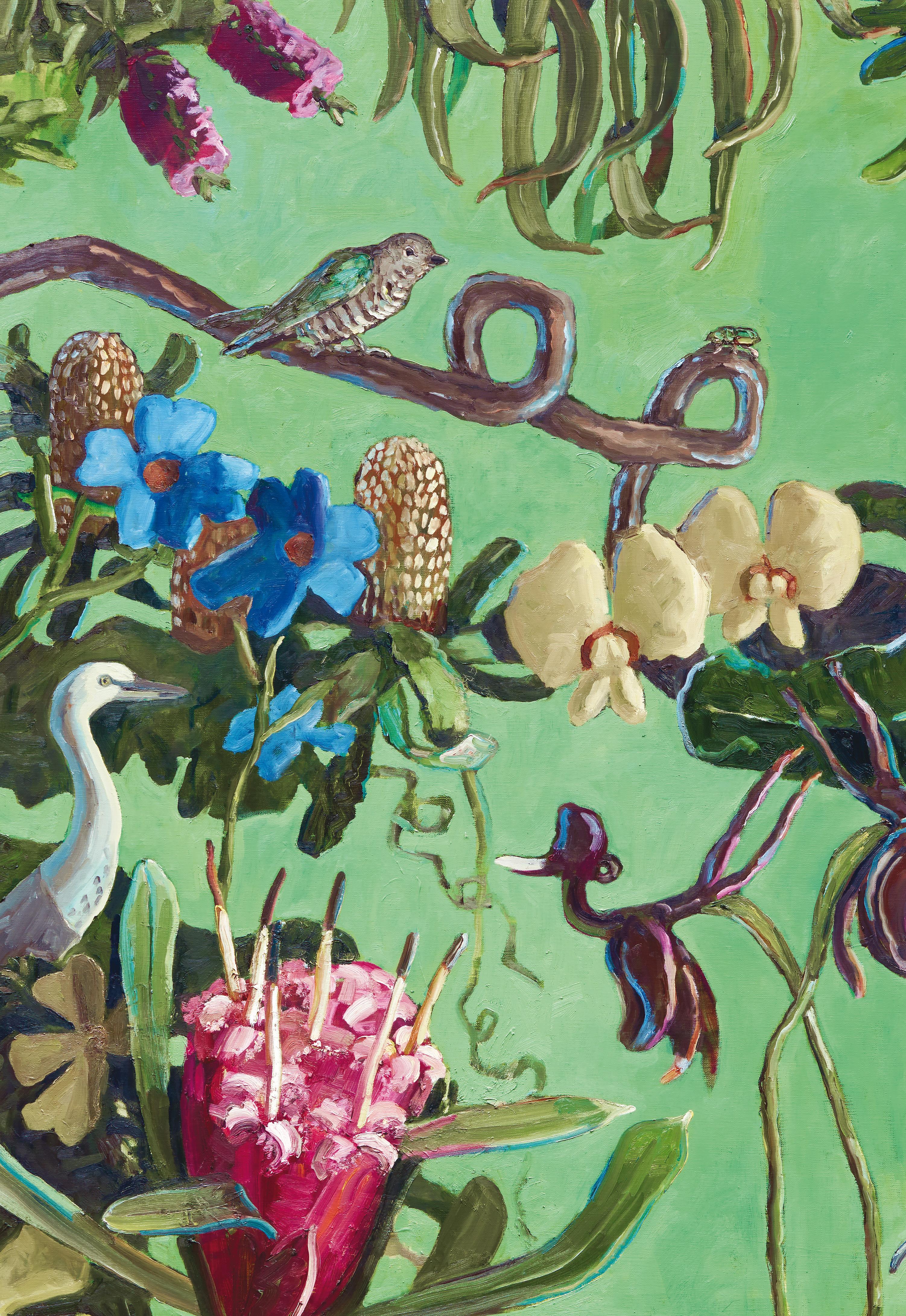

Proudly supported by Brought to you by



















































 Jarryd Kelly, Supervisor Horticulture
Jarryd Kelly, Supervisor Horticulture



































